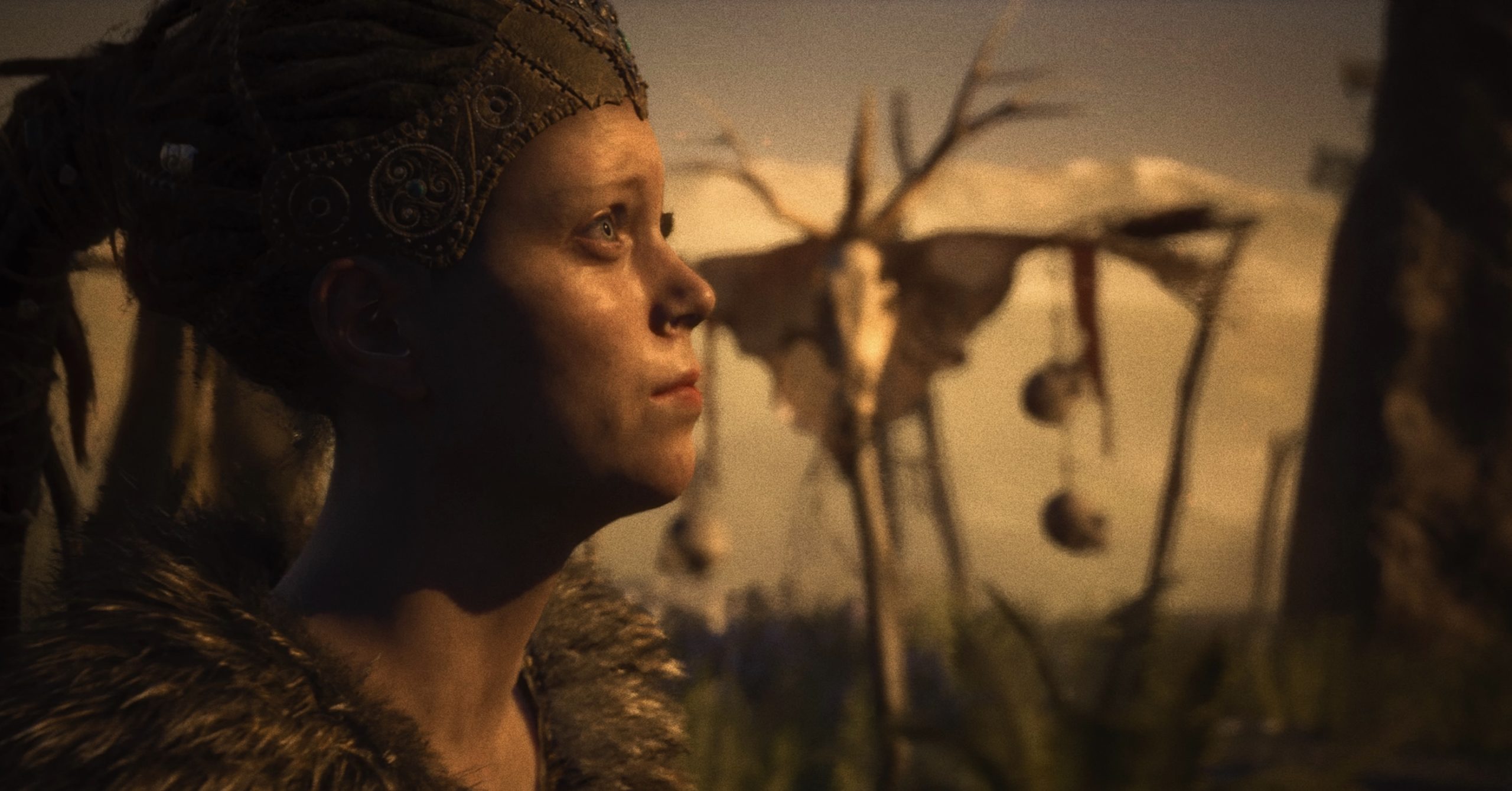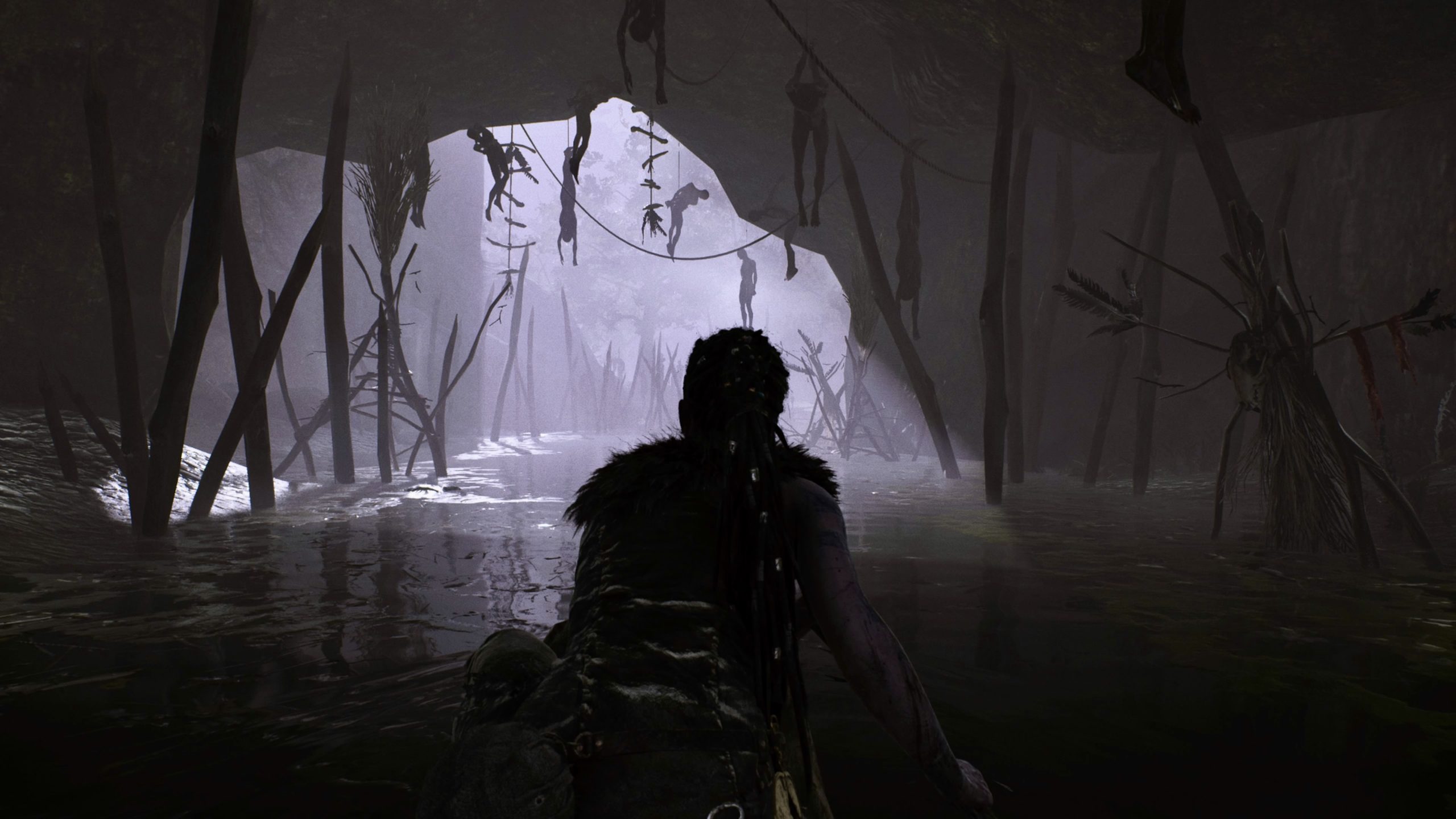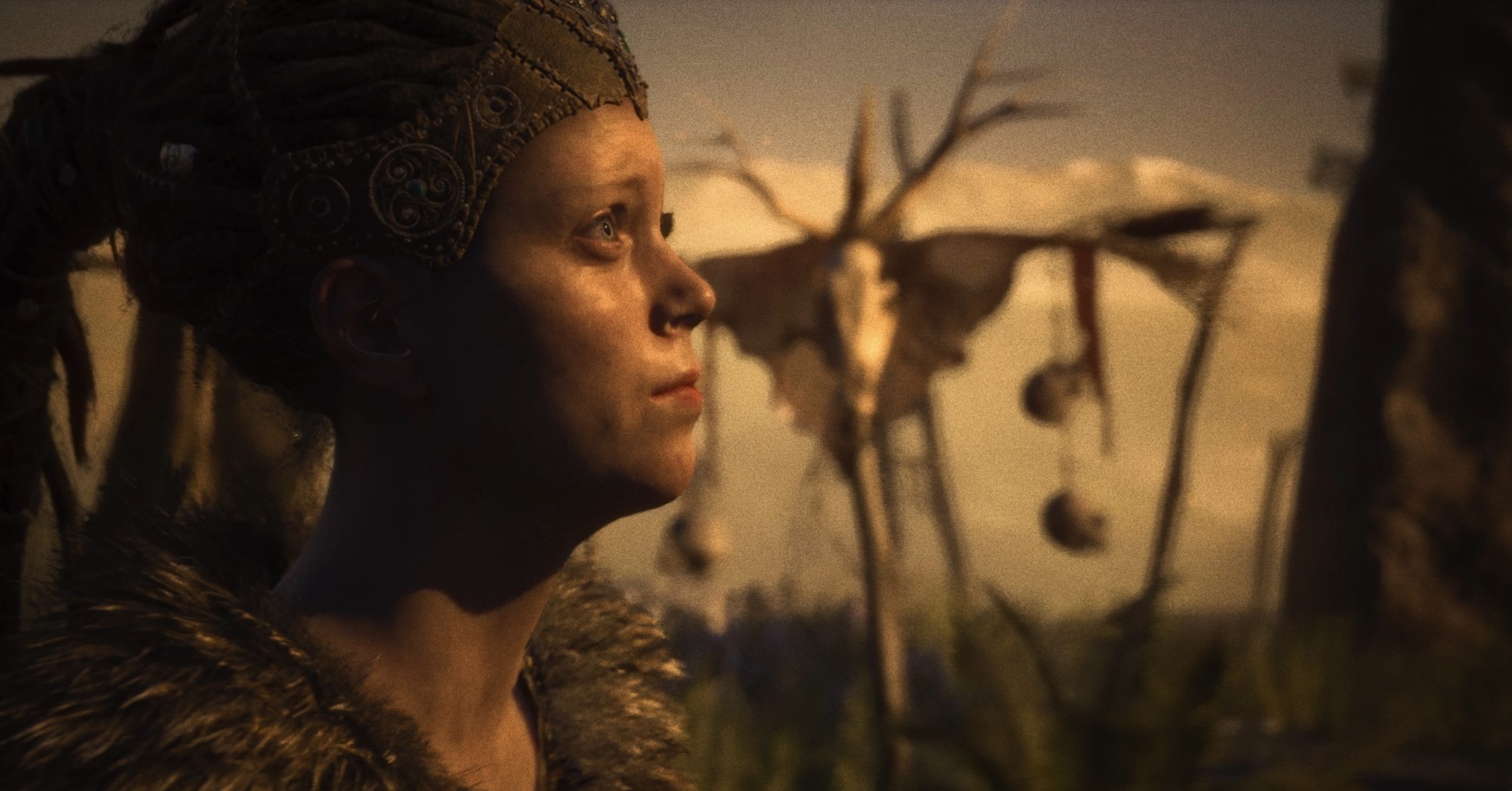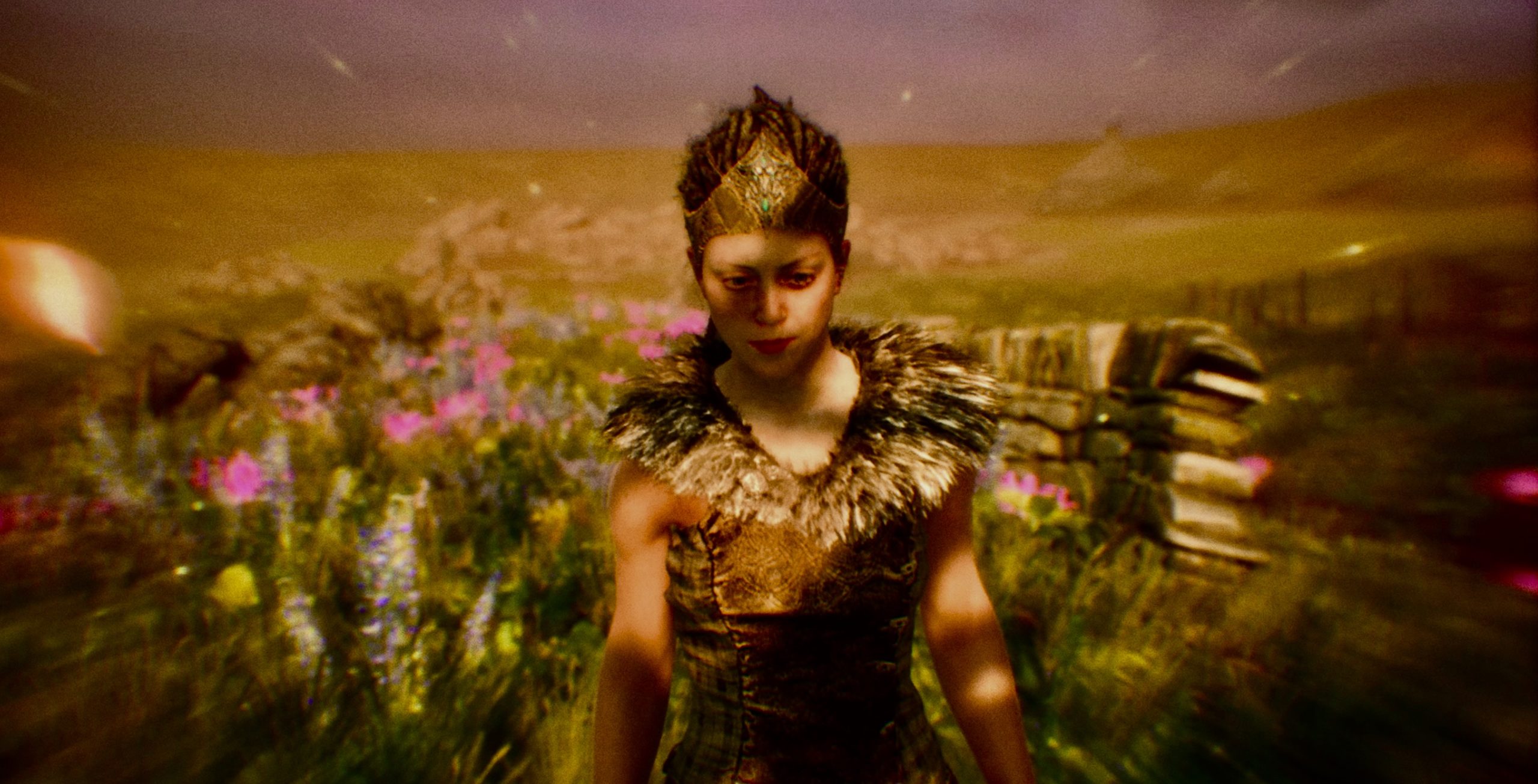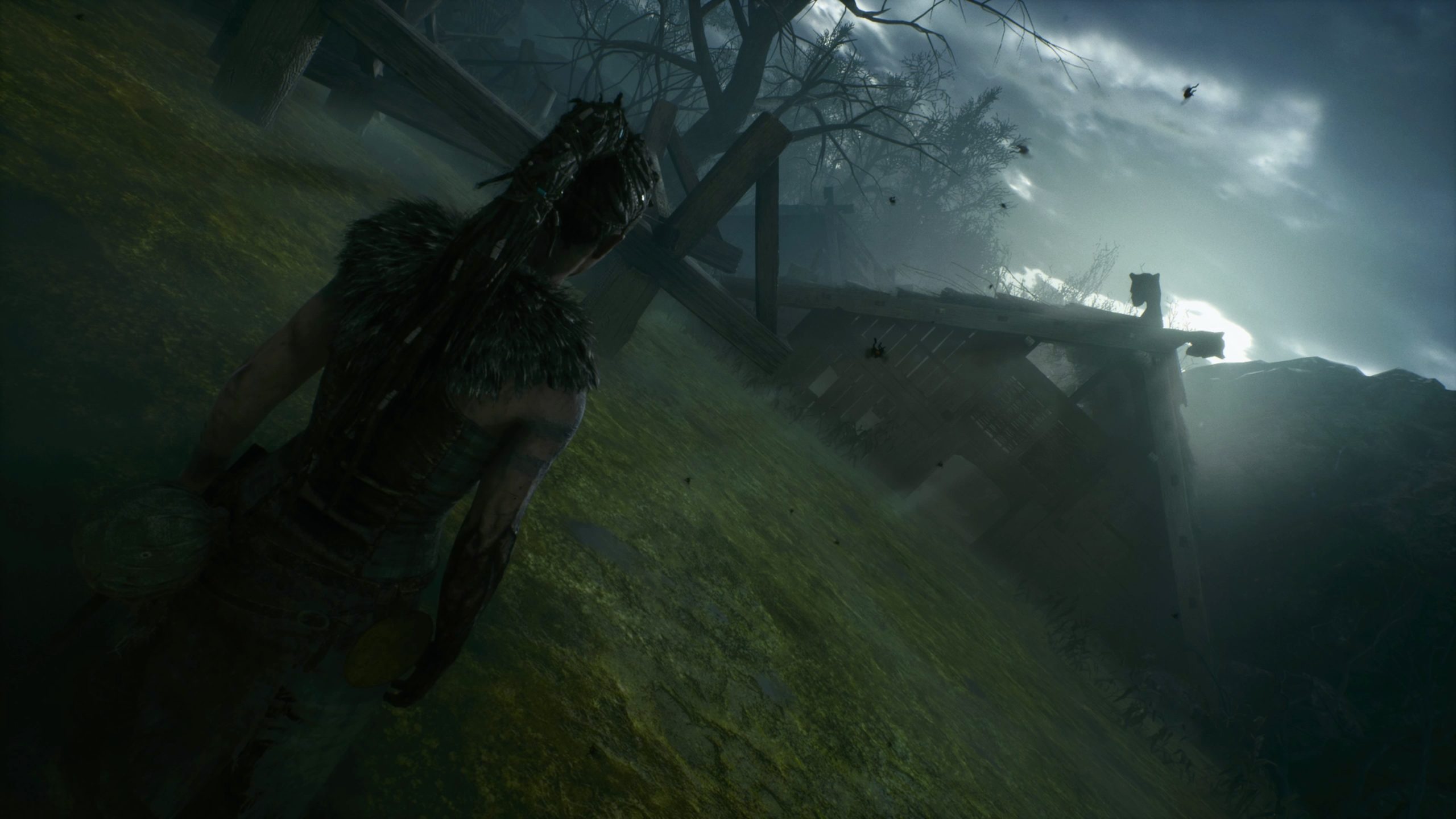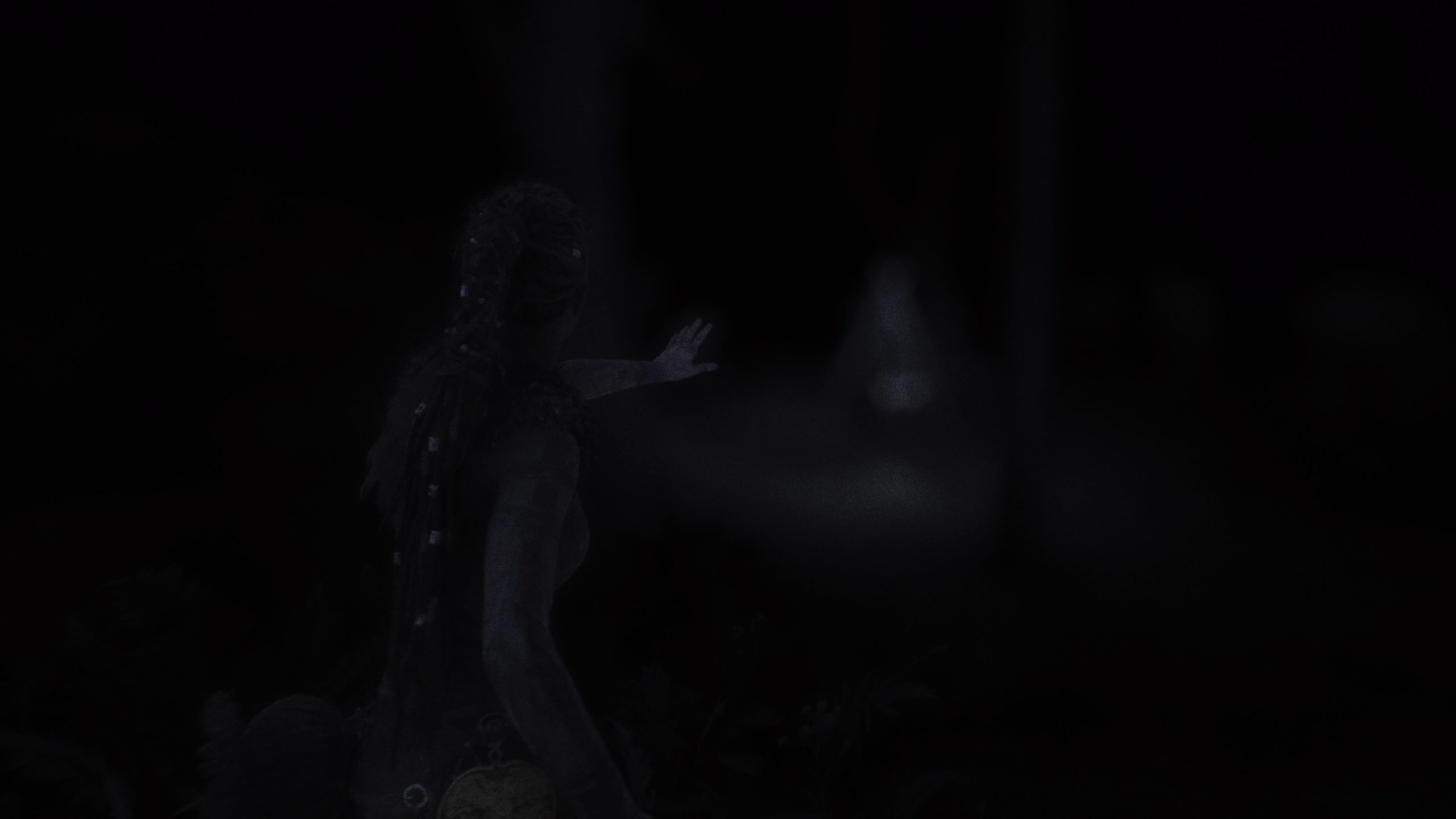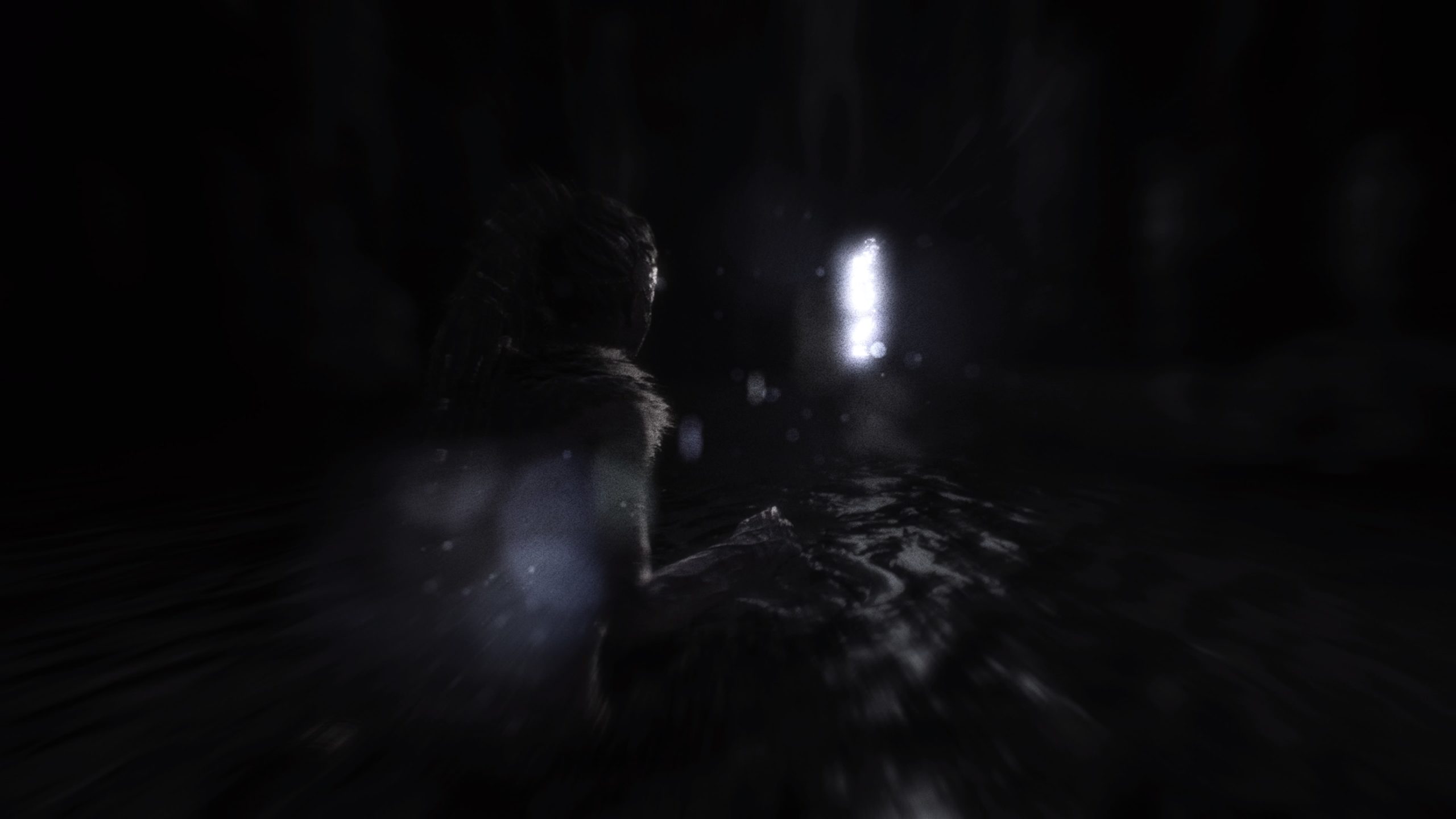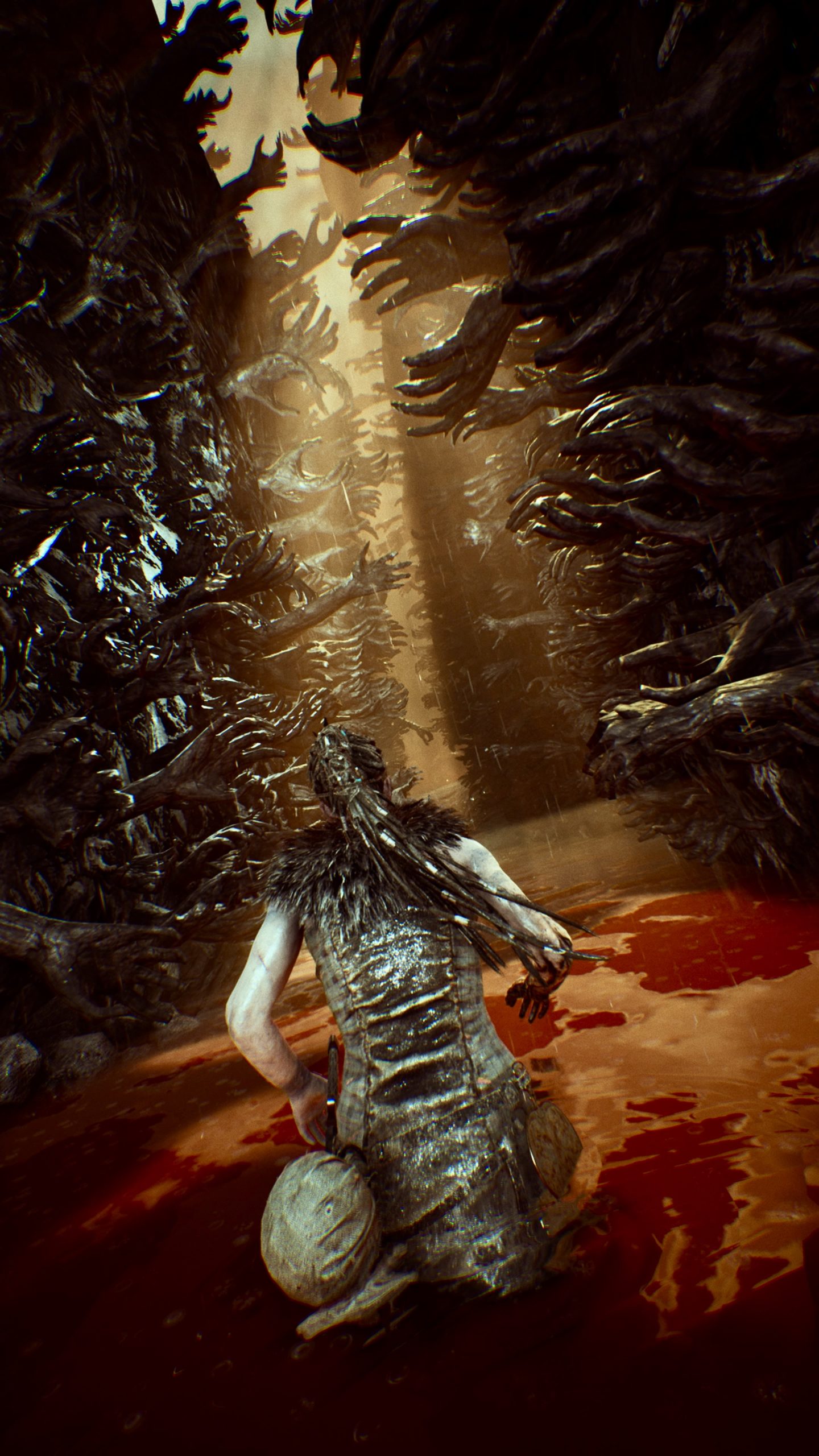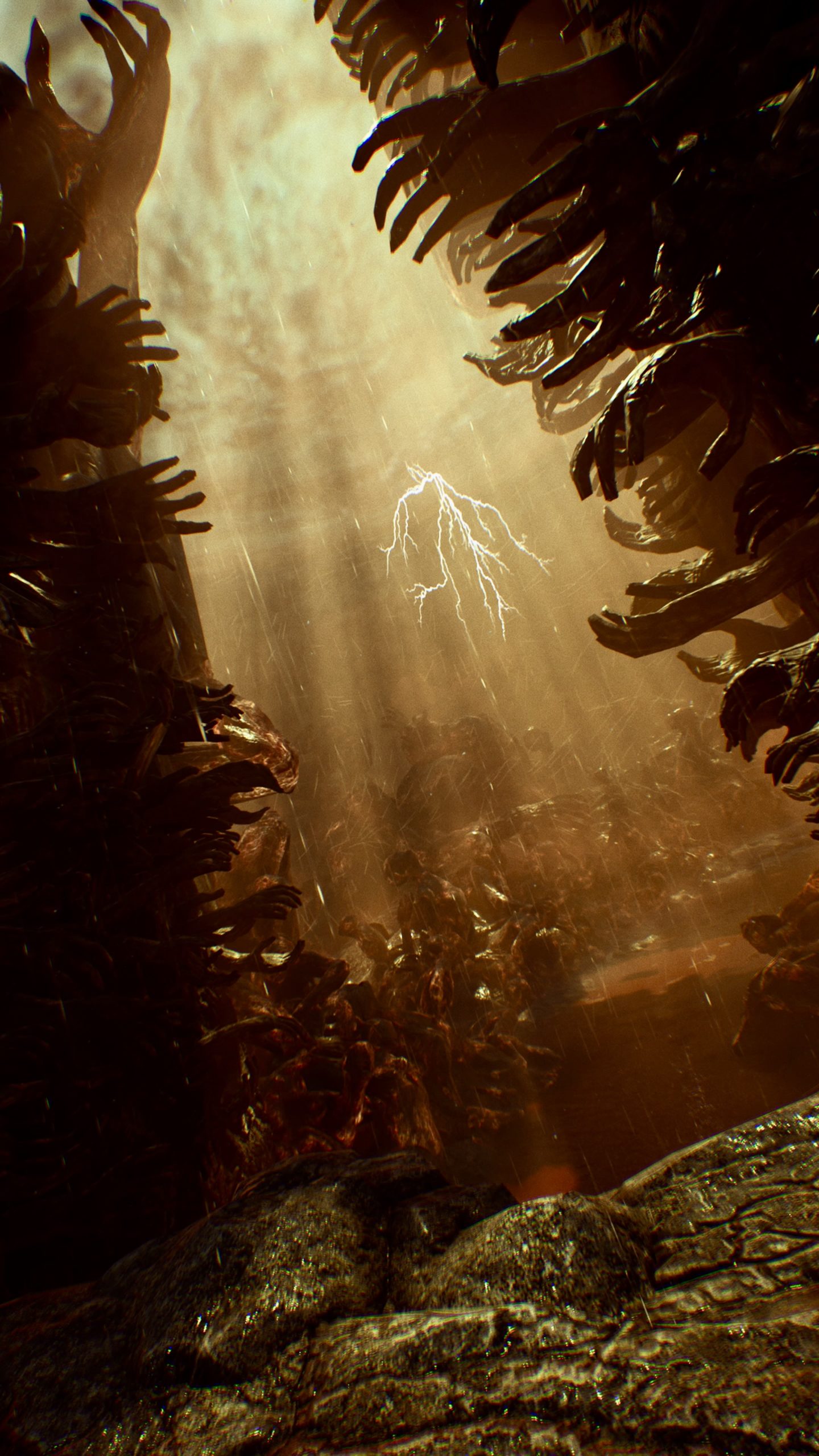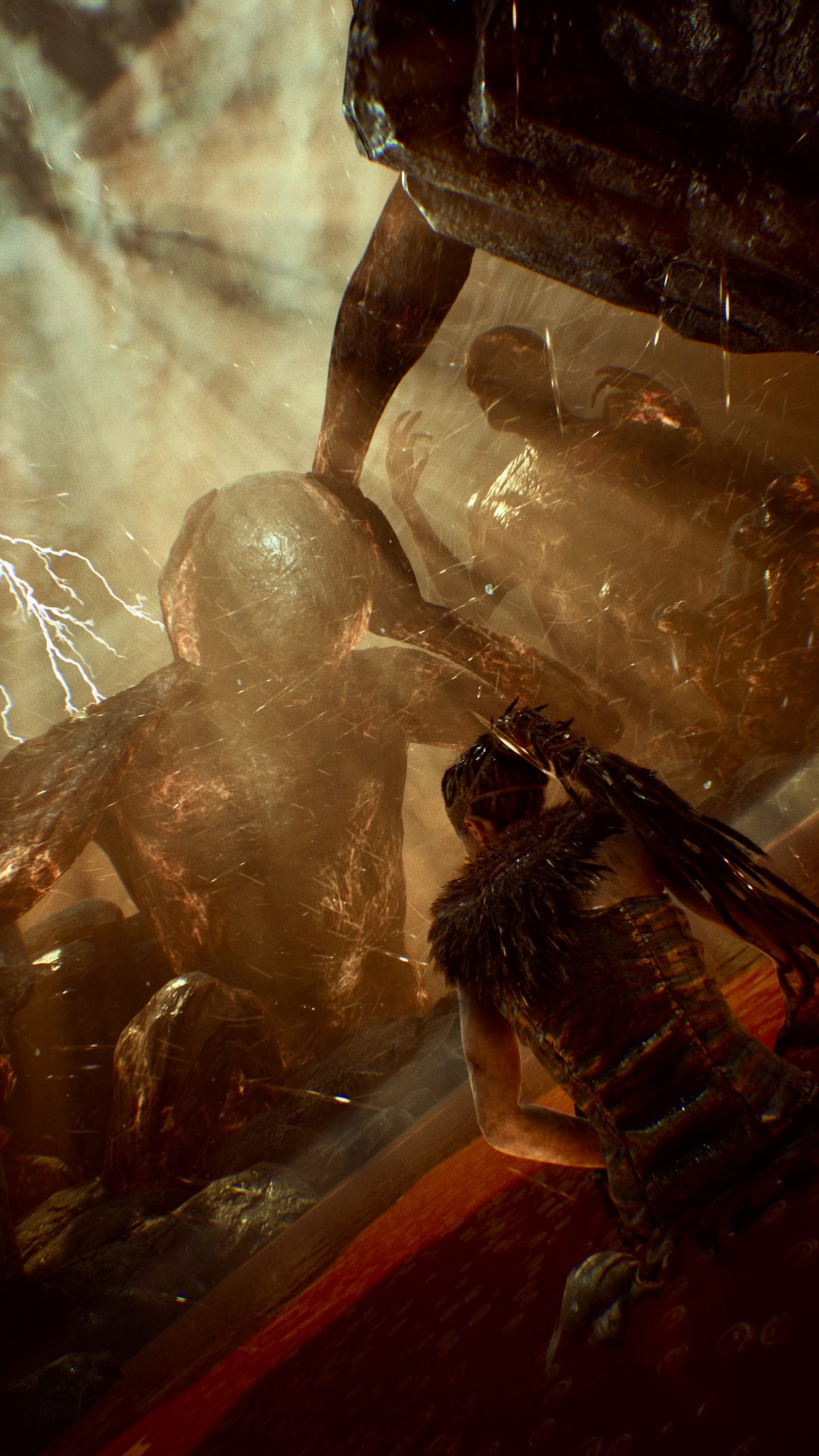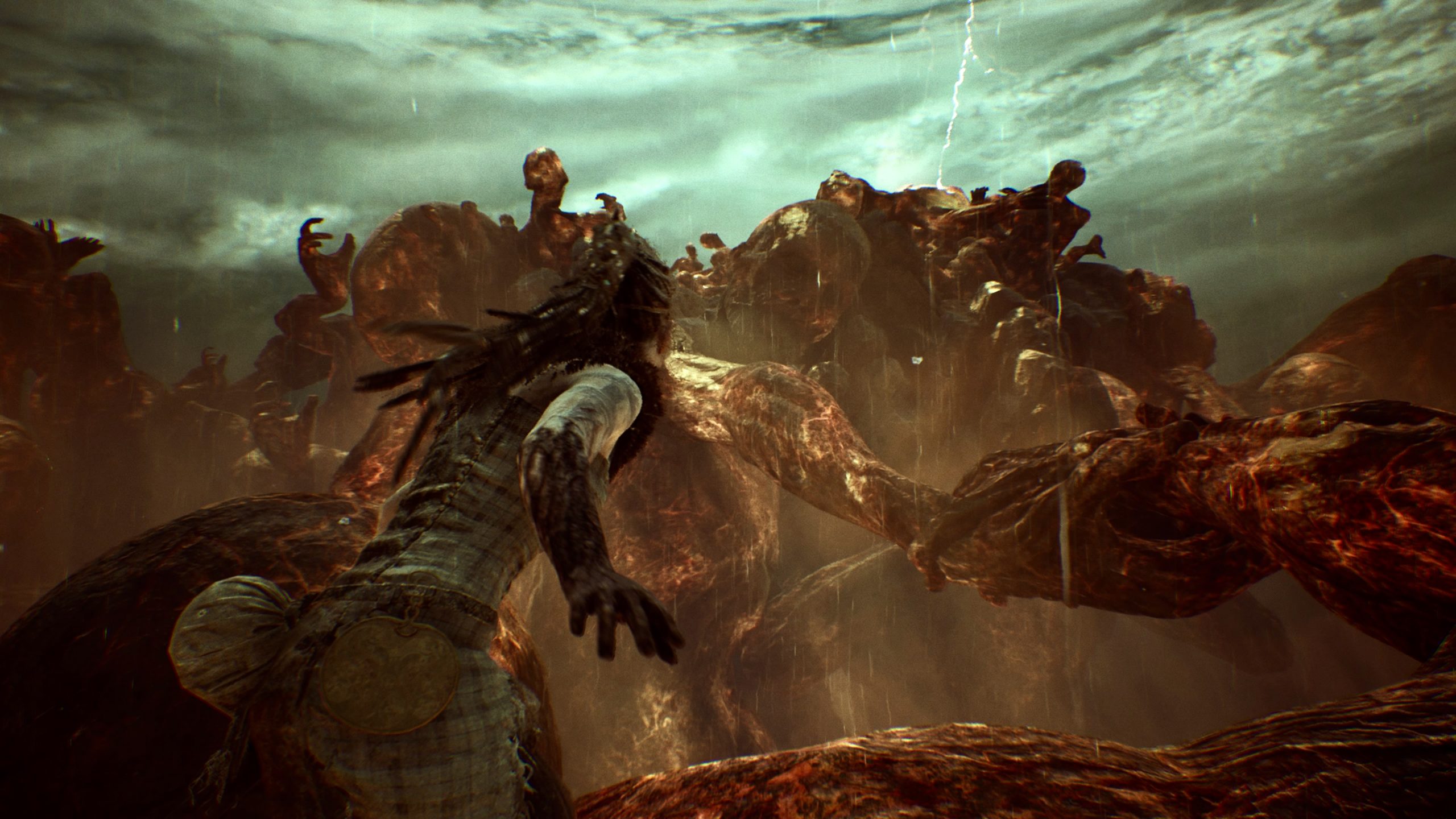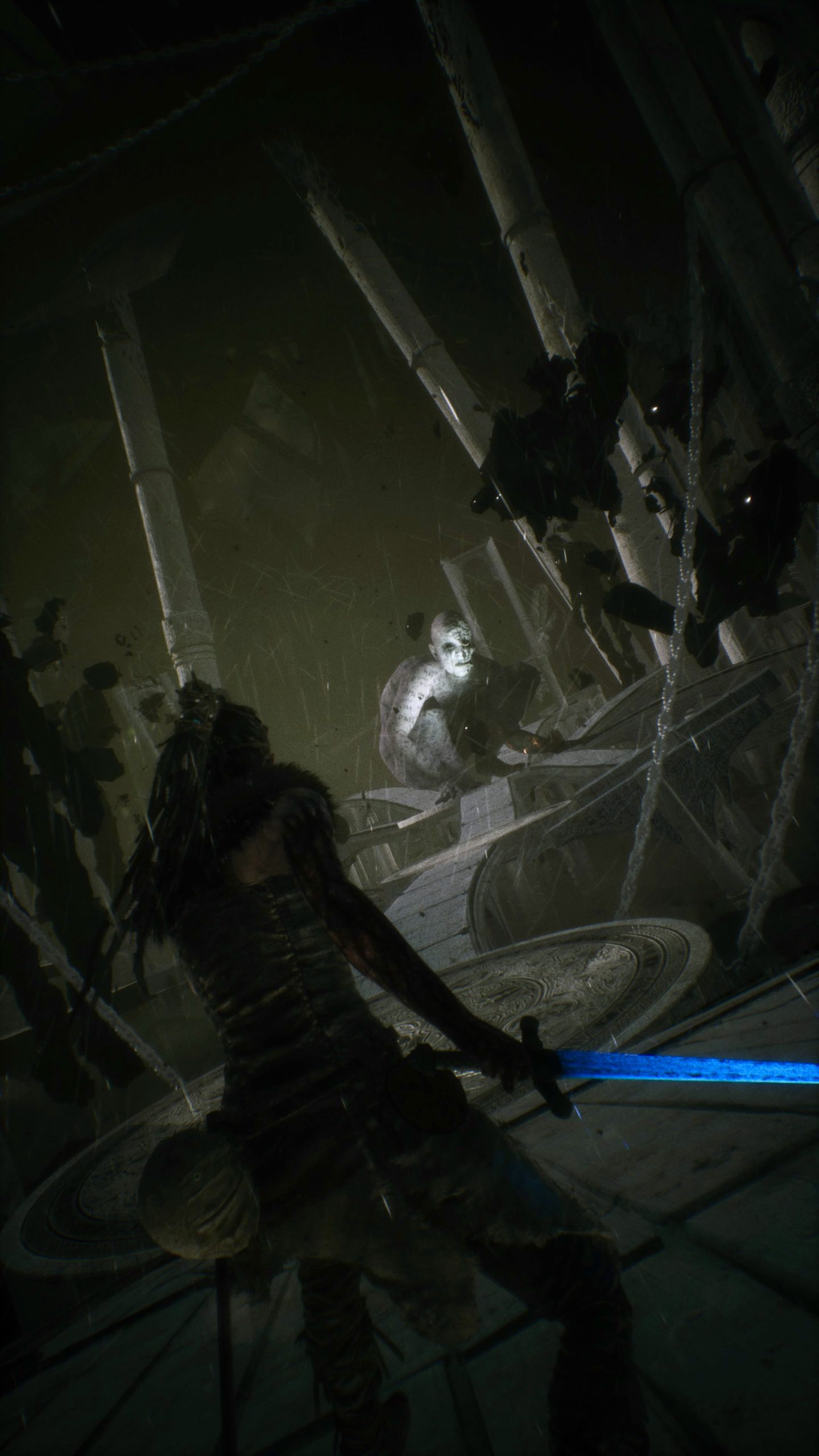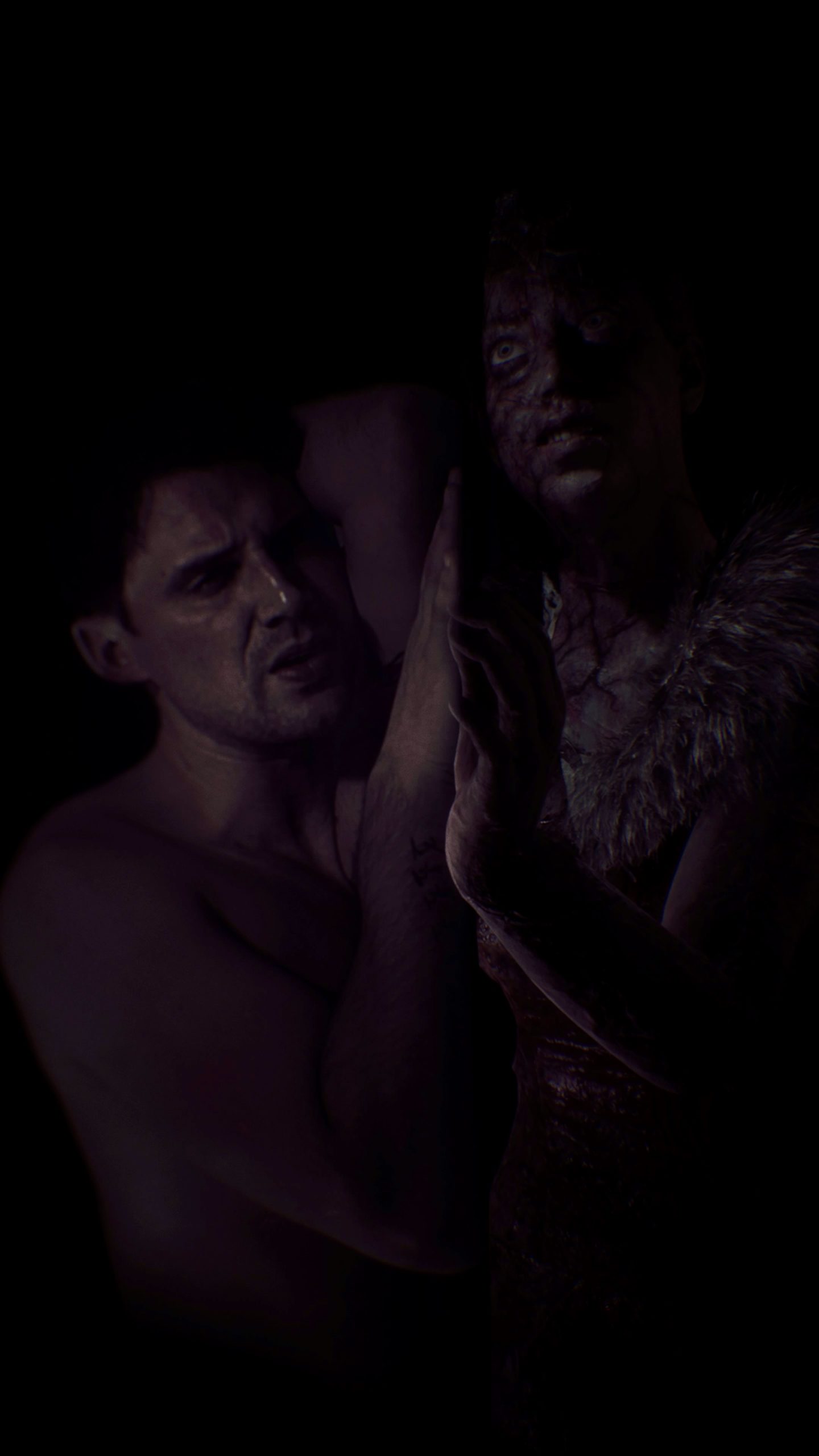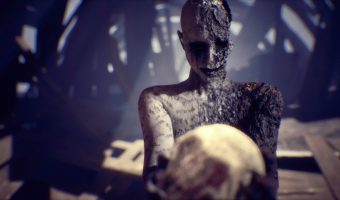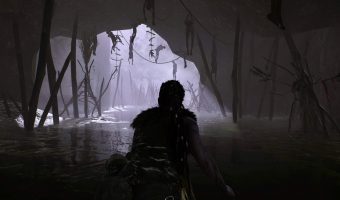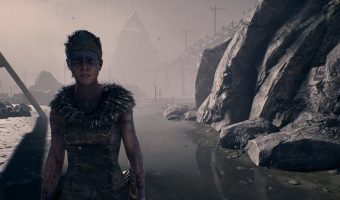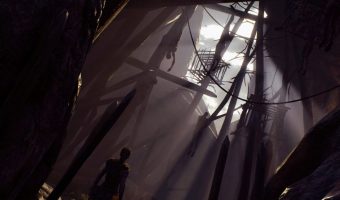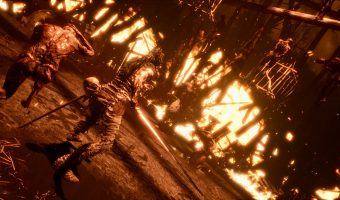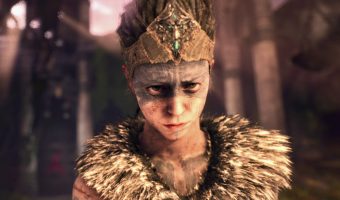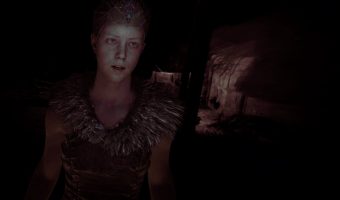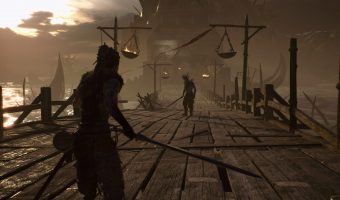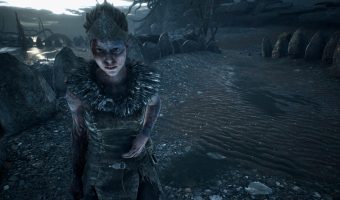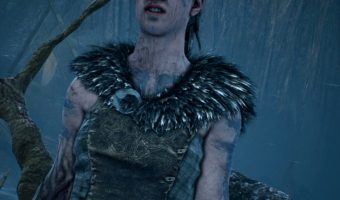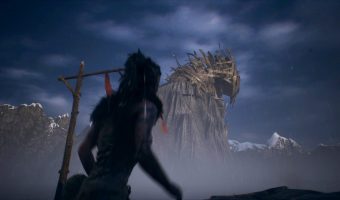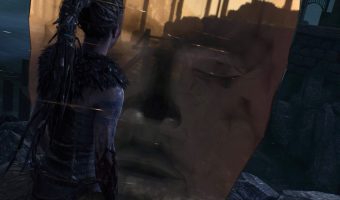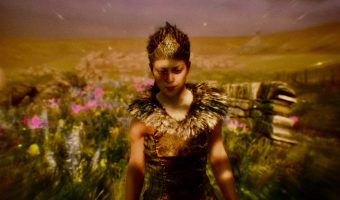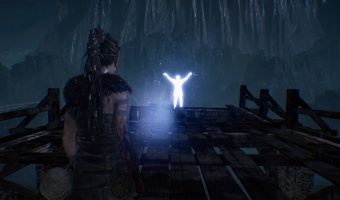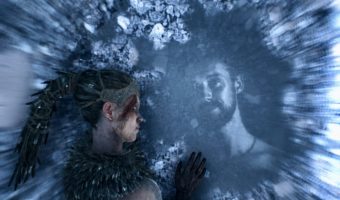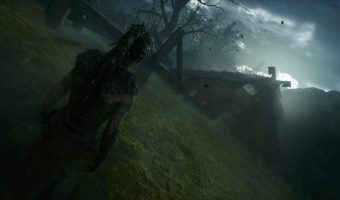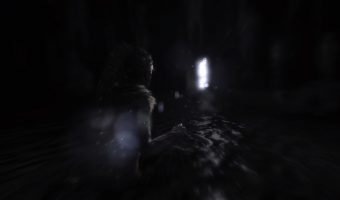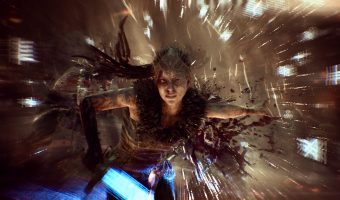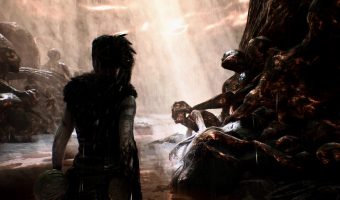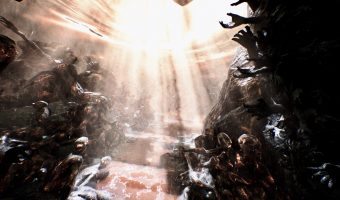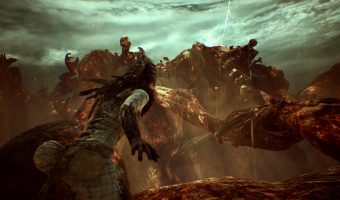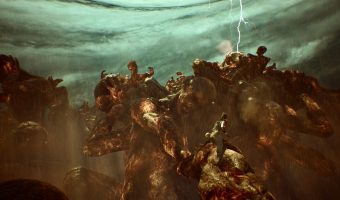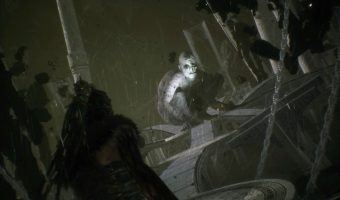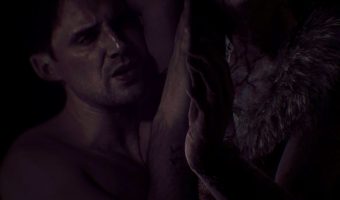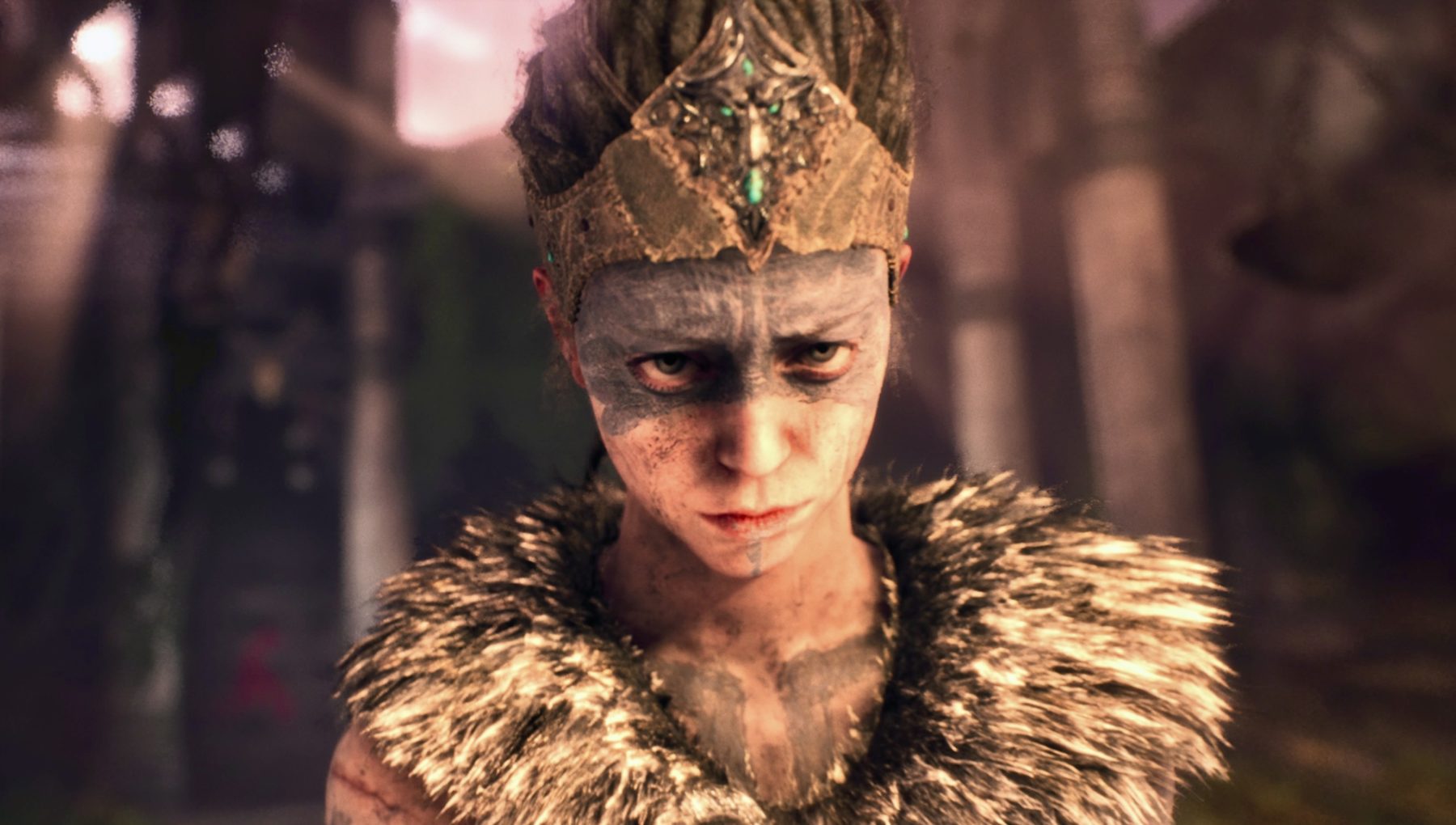
 Senua’s journey begins with a boat ride, down a river of corpses.
Senua’s journey begins with a boat ride, down a river of corpses.
In order to reach Helheim, however (and the innate wish hidden within her unconscious), Senua has to pass several trials—or what Sigmund Freud would call the dream’s defense mechanisms. These are both connected to Norse mythology (which Senua knows from the stories of Druth) and the traumas she has suffered in life. Especially the latter are of major importance here, as Senua has repressed them the depths of her unconscious—primarily the mistreatments of her father that are connected to entrapment, loss, and death.
Hellblade, as such, is a natural fit for game tourism, since the game showcases vital moments of Senua’s suffering and allows players to capture her emotions through virtual photography. This ‘rebellion’ against intrusive father figures, the death of loved ones, and a consequent mental trauma are directly experienced by players. For Senua’s psychotic episodes, which manifest through hallucinations and delusions, are a vital part of gameplay and help players become sensitised to the experience of psychoses: how they develop (plot), haunt the sanity of the mental ill (gameplay and visuals), and may be overcome through cathartic experiences (end of the game).Plot of Senua’s journey
Players experience the plot of Hellblade: Senua’s Sacrifice on several layers. First, there is the overt story of Senua, a Pict warrior and young woman who embarks on a journey to Helheim to save the soul of her boyfriend, Dillion. He was killed during a Northmen invasion in Senua’s absence and isolation in the woods to fight the darkness within her. Feeling guilty and lost, Senua takes Dillion’s dismembered head to reunite it with his body in the depths of Helheim. The hidden wish here is both obvious and oblique. For Senua yearns to be reunited with her friend and lover and faces a difficult fight in the acceptance of loss (which has her move through various stages).
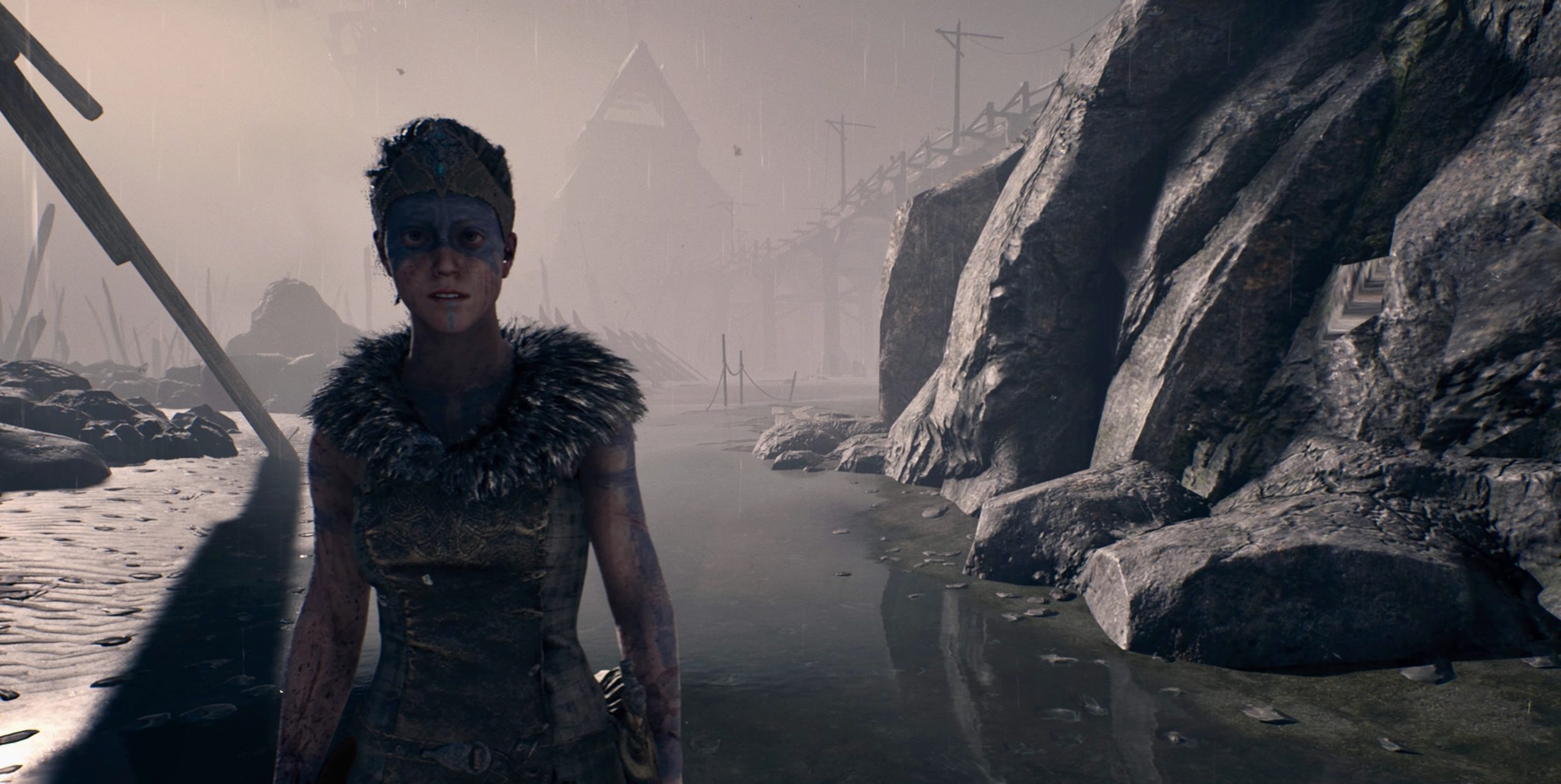

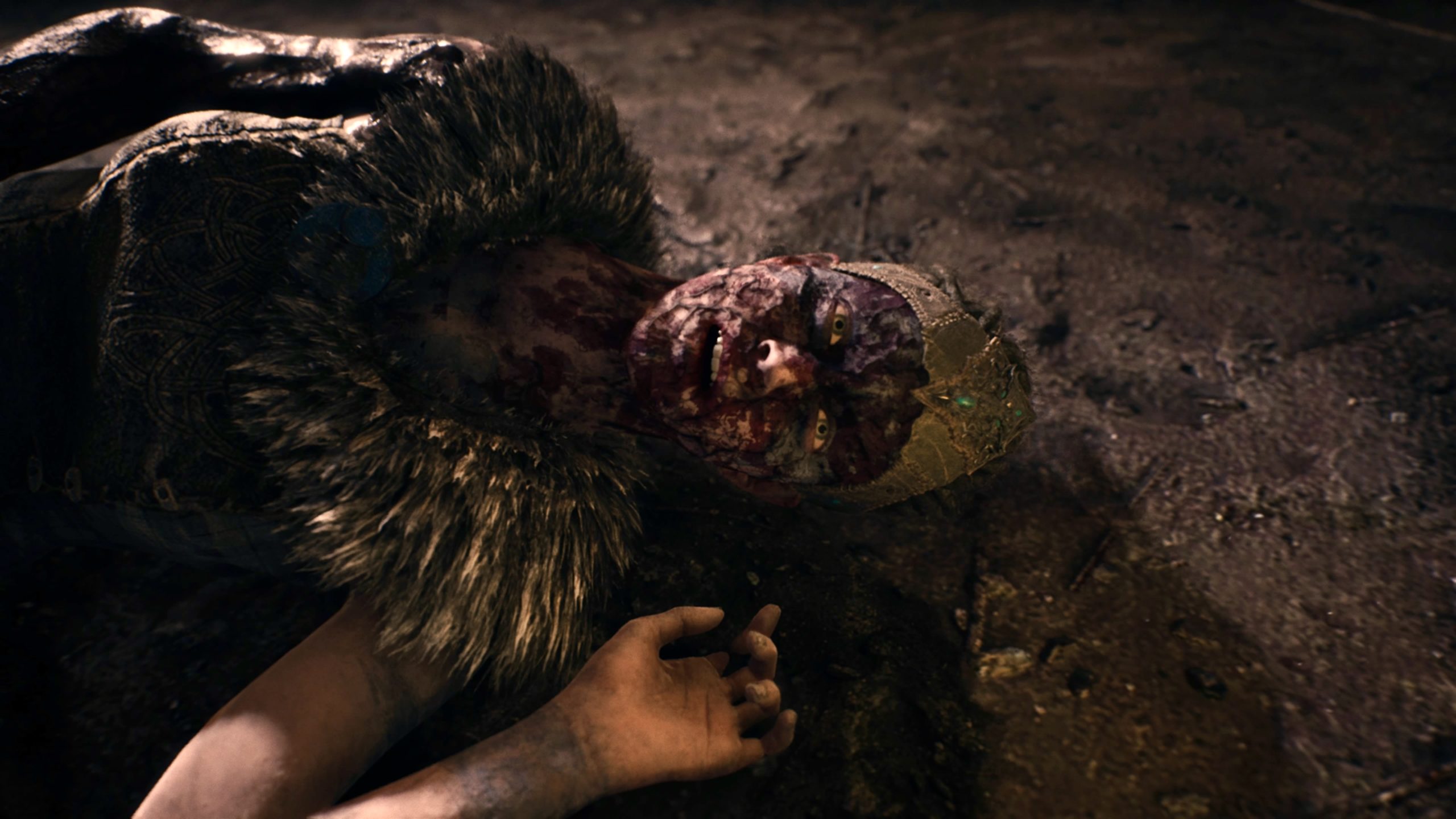 On several occasions, Senua is very close to death (or so it seems). And these episodes sensitise players to the dark pits the psyche can open up.
On several occasions, Senua is very close to death (or so it seems). And these episodes sensitise players to the dark pits the psyche can open up.
On a second level, Senua’s story can be regarded as a historical journey into Norse mythology. It is narrated in fragments by Druth (whom Senua met during her time in the woods), while players experience the violence brought about by the Northmen in combat encounters. These historical narrations fuel Senua’s hallucinations and are always connected to (or even create, one could argue) the part of the gameworld she traverses.
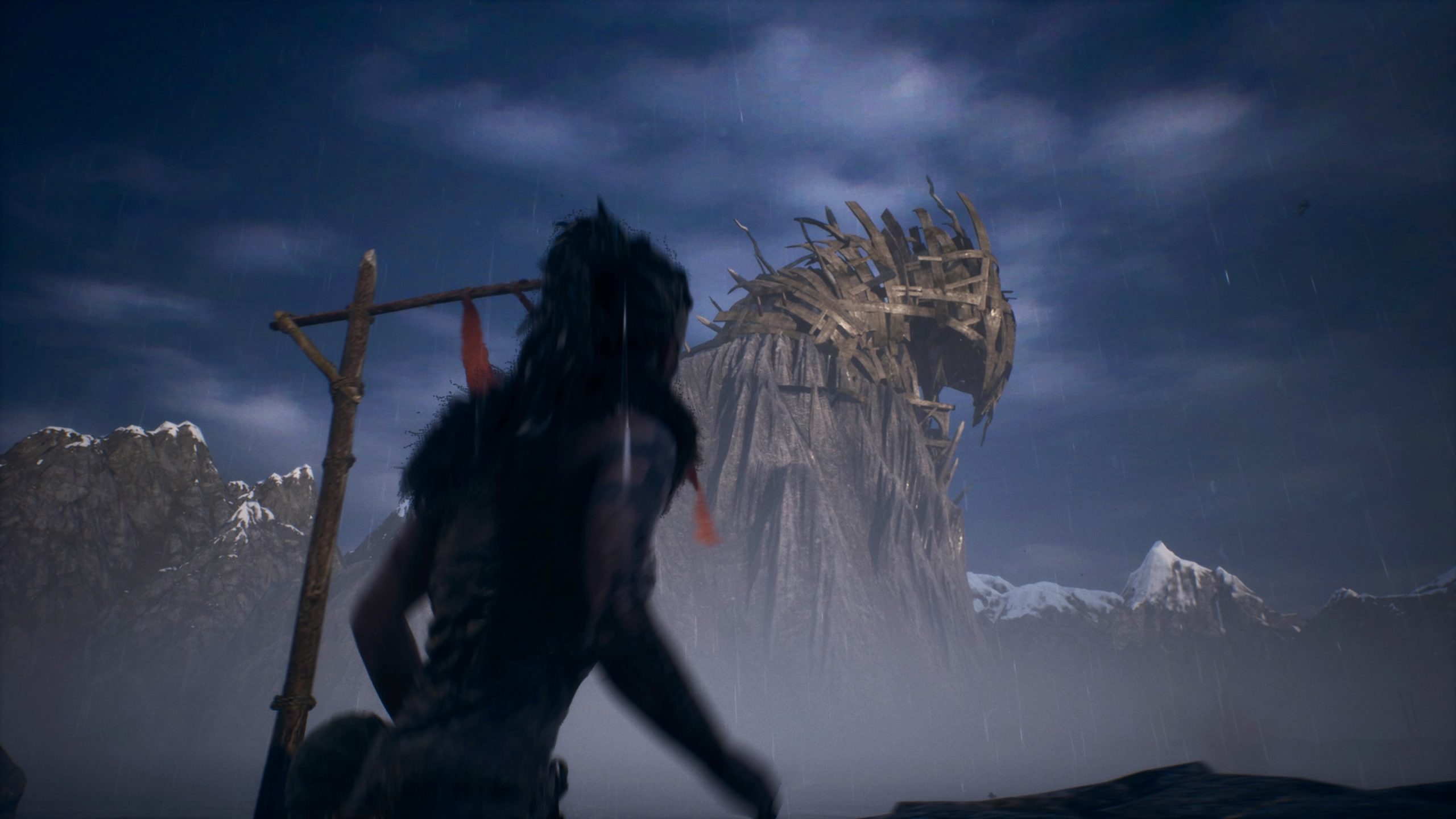
 With the Northmen invading Dillion’s village and murdering him and other, Senua slides even further into mental illness and now embarks on a journey to Helheim.
With the Northmen invading Dillion’s village and murdering him and other, Senua slides even further into mental illness and now embarks on a journey to Helheim.
- that Senua’s father has murdered her mother by burning her to the death; this he did to drive out her devils and supposed insanity (for she suffers from mental illness);
- that he often locked Senua, since the young girl also showed signs of insanity in the aftermath of her mother’s death, and
- that he drove Senua away from Dillion.


 The battles in Hellblade function like the defense mechanism of dreams and represent Senua’s fight to uncover a hidden secret.
The battles in Hellblade function like the defense mechanism of dreams and represent Senua’s fight to uncover a hidden secret.
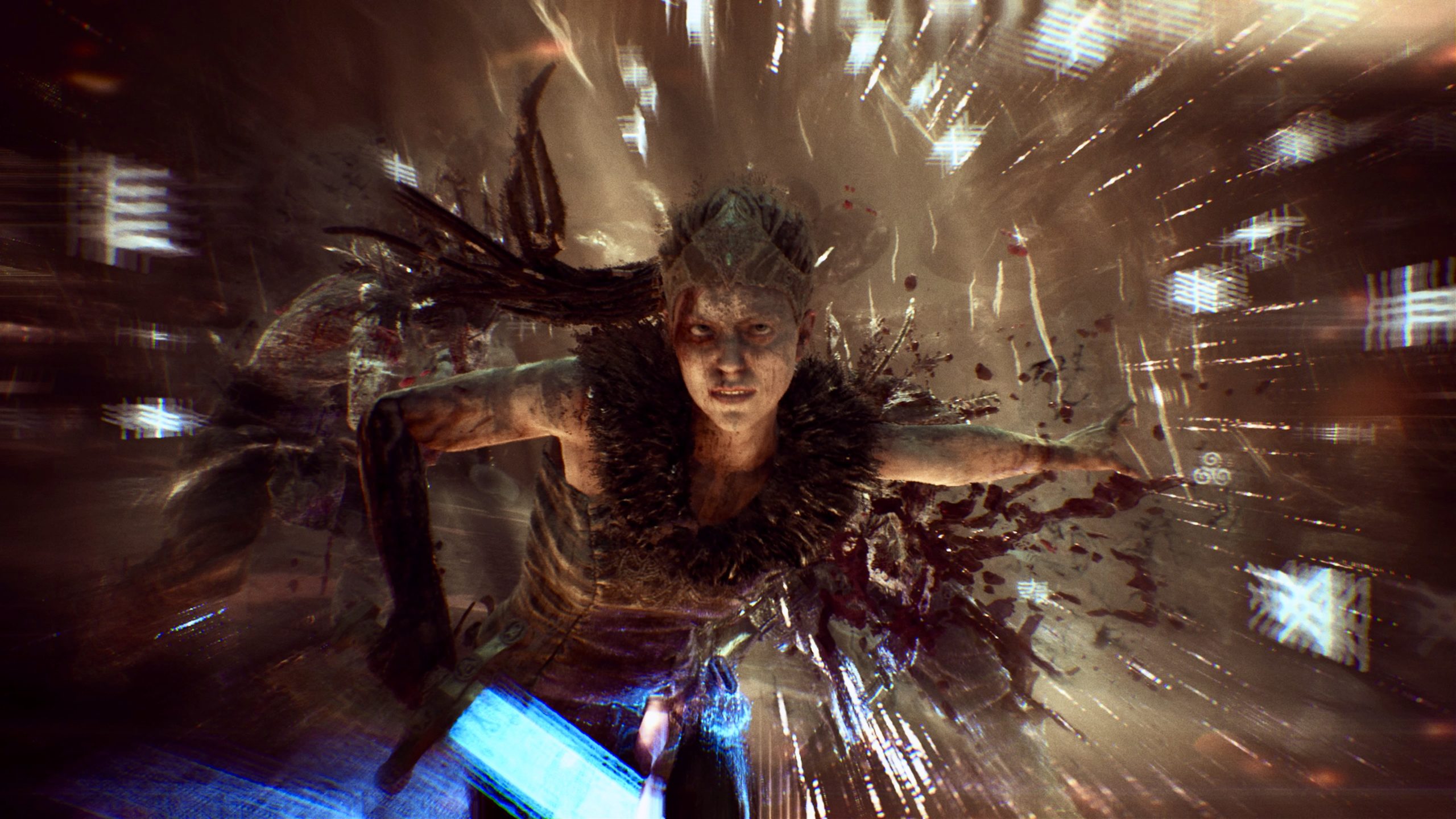 Once a battle is over, Senua sees things clearer.
Once a battle is over, Senua sees things clearer.
Characters and their relations
Galena (Senua’s mother)
Not much is known about the relation of Senua to her mother, Galena, but the latter assumes the role of a mentor during her daughter’s episodes of psychoses. These come and go in burst, and it is noticeable that specifically after battle, the world around Senua turns clear and colorful and has the young lady appear more focused. Galena thus implicitly accompanies Senua’s journey into those regions of the unconsciousness she has repressed and helps her daughter unveil the traumas that haunt her. This journey to partial catharsis (for Senua will not heal completely by the end of the game, but make a first, vital step towards it) is disrupted by her father apparitions in various instances and monsters.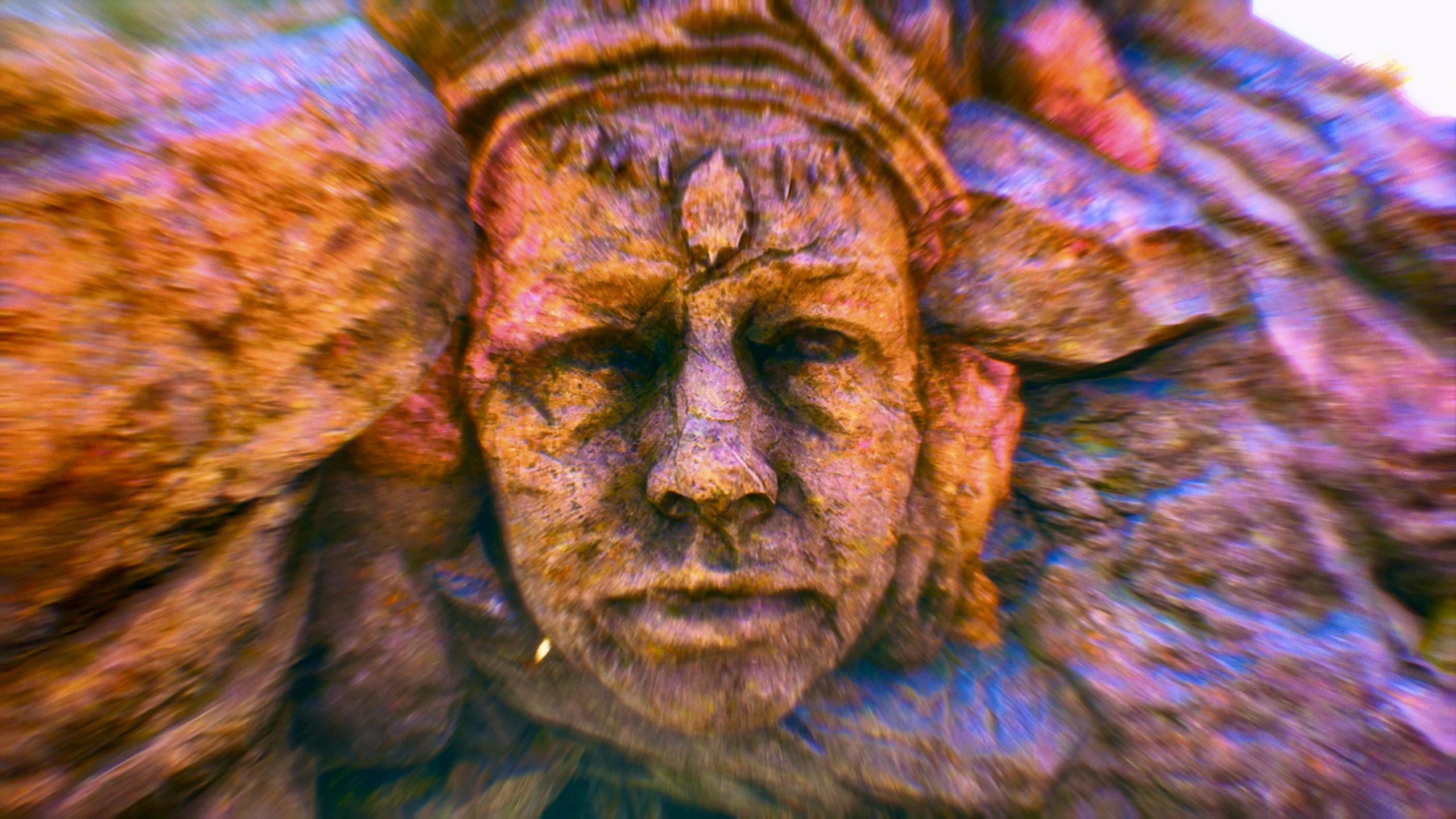
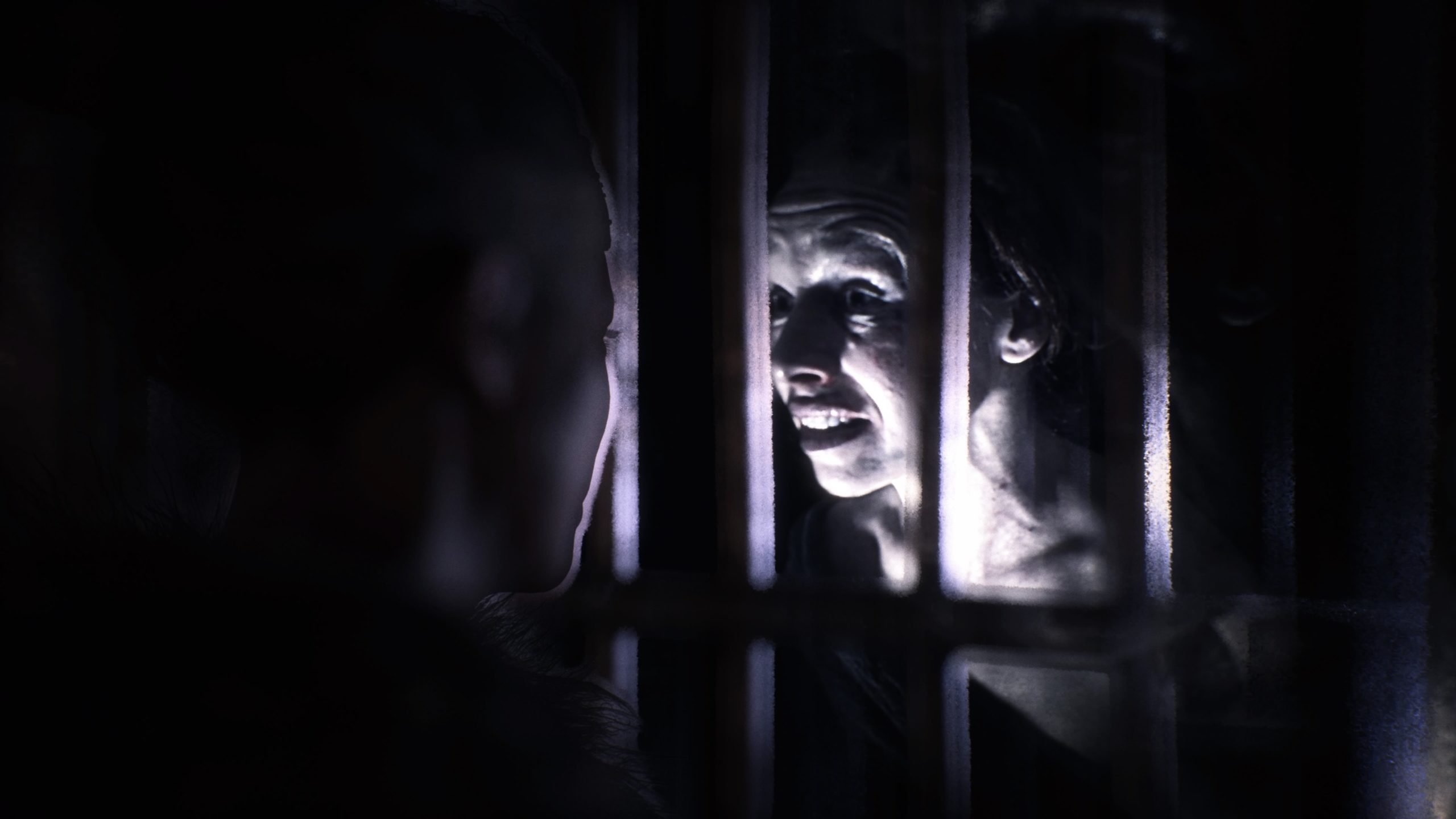 Galena appears to Senua on various instances and manifestations. She functions as a mentor to help her through the psychotic episodes.
Galena appears to Senua on various instances and manifestations. She functions as a mentor to help her through the psychotic episodes.
Zynbel (the mistreatments of Senua’s father and a fanatic lunatic)
Zynbel represents a dark voice in Senua’s head. He lies to her on various occasions and diverts Senua from her path to mental sanity as well as the emancipation from him. He is, in other words, the architect of Senua’s suffering, the villain who mistreats her both physically (in the past by locking her away) and mentally by stalking her nightmares in the form of vicious creatures and the hellhound, Fenrir: the puppy eating wolf from Norse mythology who chases Senua through a labyrinth of mental pain.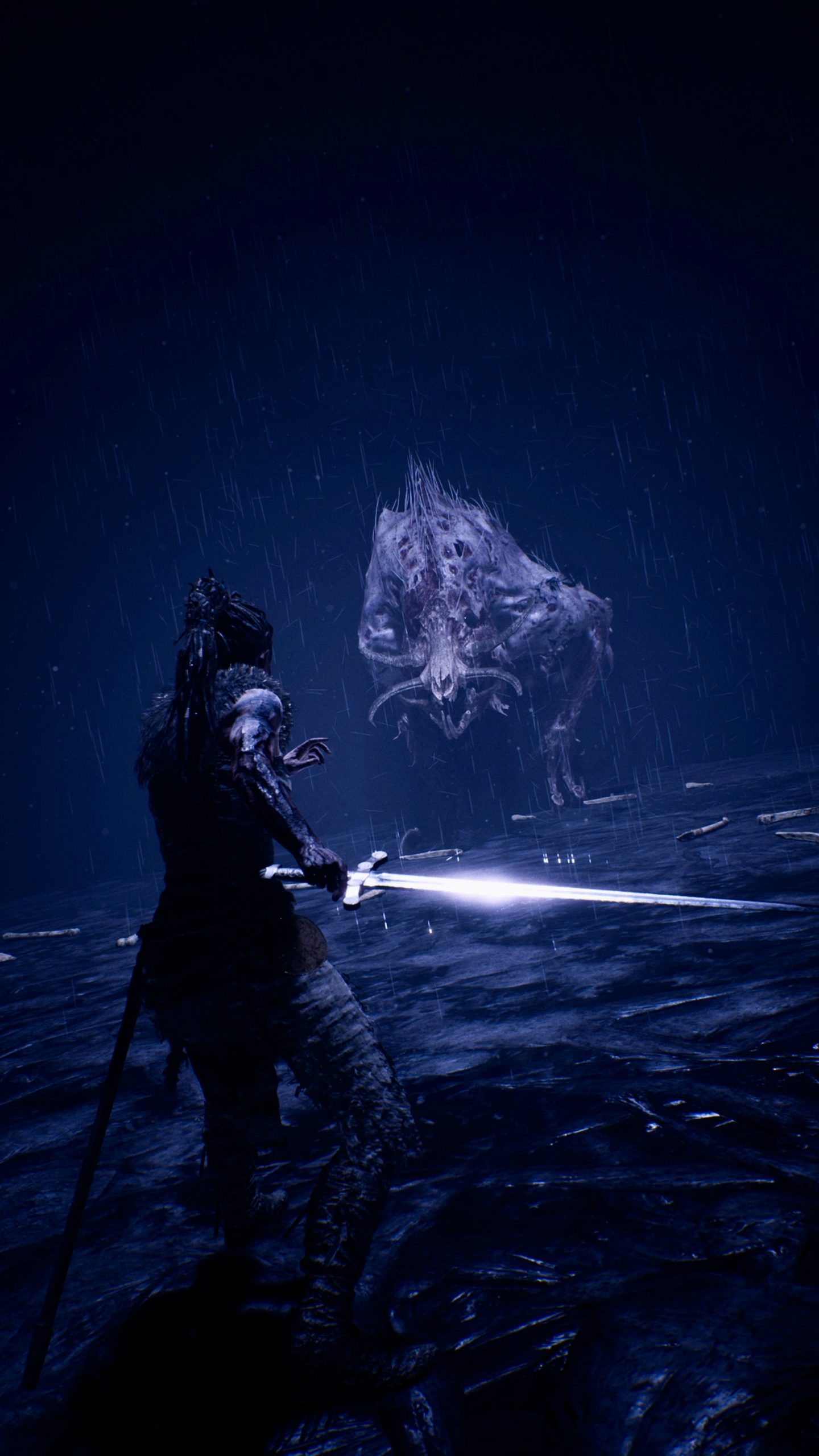
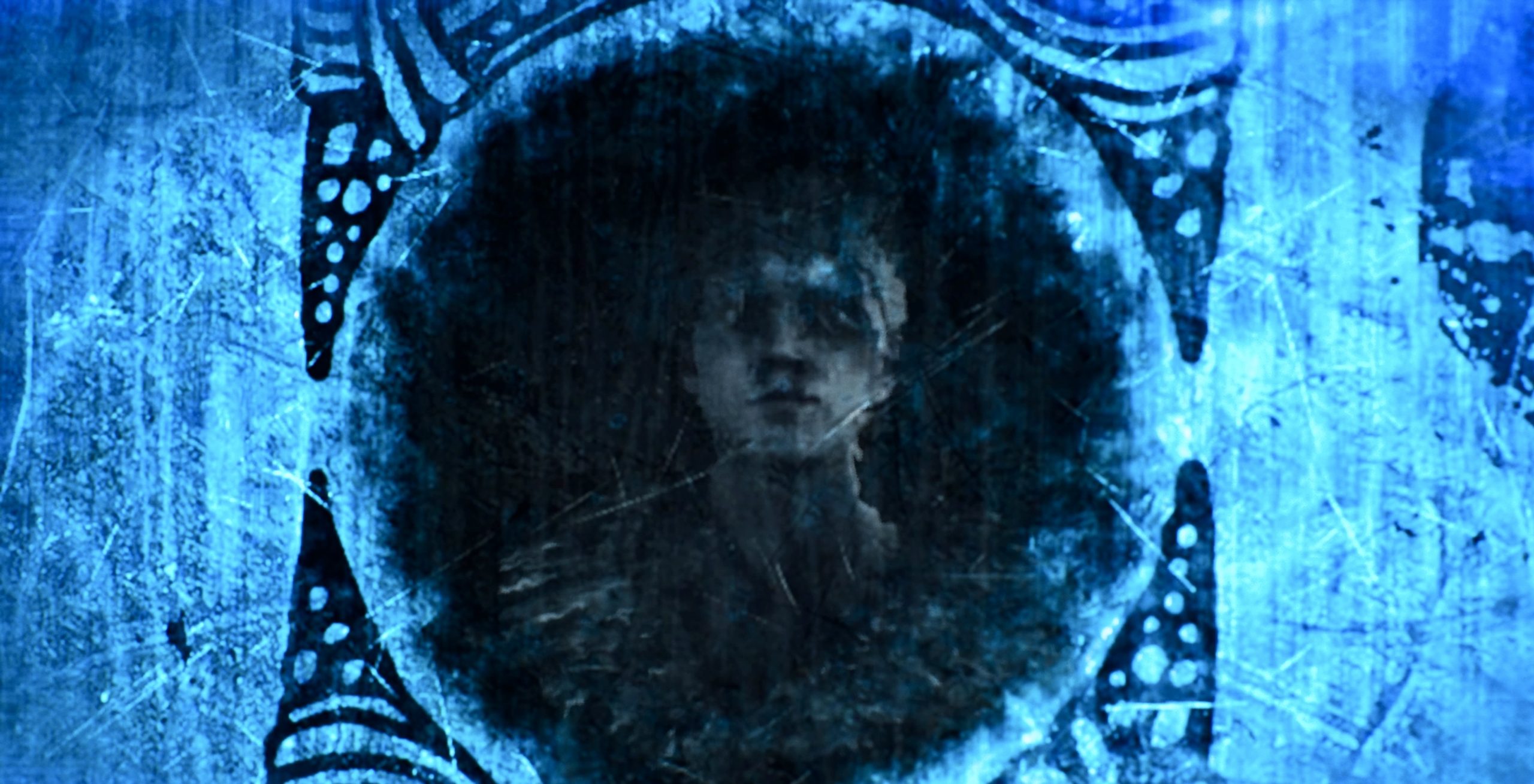 Zynbel appears to Senua in various manifestations, the most prominent of which is the hellhound, Fenrir. But her fight is also one with her own self.
Zynbel appears to Senua in various manifestations, the most prominent of which is the hellhound, Fenrir. But her fight is also one with her own self.
Druth and his own visions of insanity
Yet, it is not only Zynbel who fuels Senua’s hallucinations and delusions but also Druth, who tells Senua about the threat of the Northmen. He thus projects his personal delusions on Senua: his stories about slavery and the loss of his family. Due to these stories, the world around Senua (specifically the sections of Norse mythology) are plunged into darkness and appear in a threatening way.Dillion as a bright light in Senua’s mind
Besides her mother, Dillion functions a s mentor to Senua, a bright light to guide her towards her goals. Moreover, he taught her how to fight with a sword and gives mental as well as pathfinding guidance through the labyrinth of her psychoses (in the form of a glowing figure that leads the way).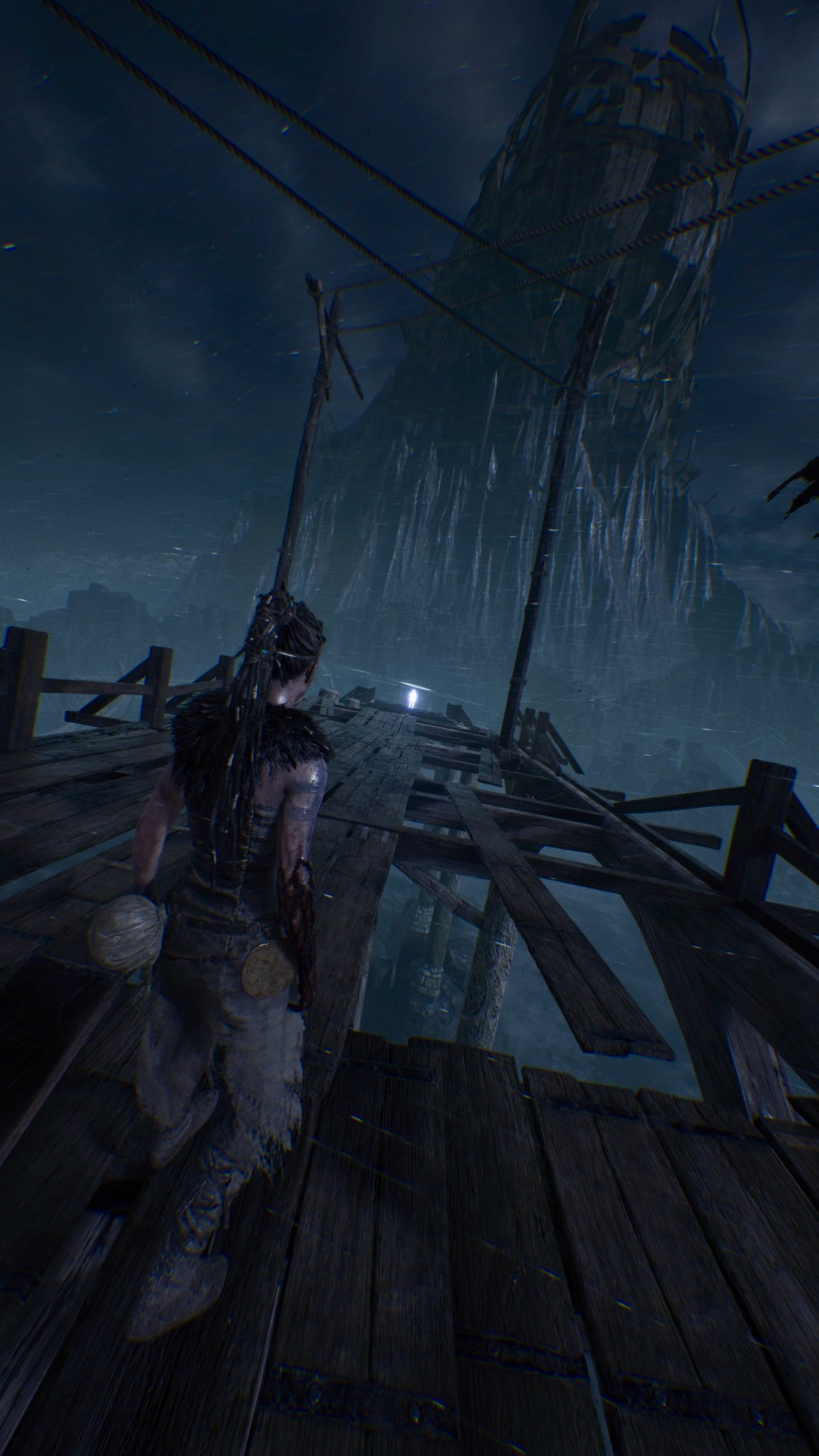

 Dillion appears in the form of visions and a glowing figure, leading Senua the way.
Dillion appears in the form of visions and a glowing figure, leading Senua the way.
Hela as Senua’s darkest fears and secrets
After Senua’s descent into the underworld, she is about to face her inner fears (the wish hidden with the dream) that come in the form of Hela. Hela is the goddess of the underworld in Norse mythology and represents a manifestation of Senua’s deepest fears.
In the final encounter, the goddess thus first appears as a reincarnation of Zynbel to then become a manifestation of Senua’s self and illness—shortly before the young women manages to cope with Dillion’s and her mother’s death. Interestingly (according to Norse mythology), Hela herself was an unloved child (that of Loki) and was banned by Odin to the fires of Helheim.
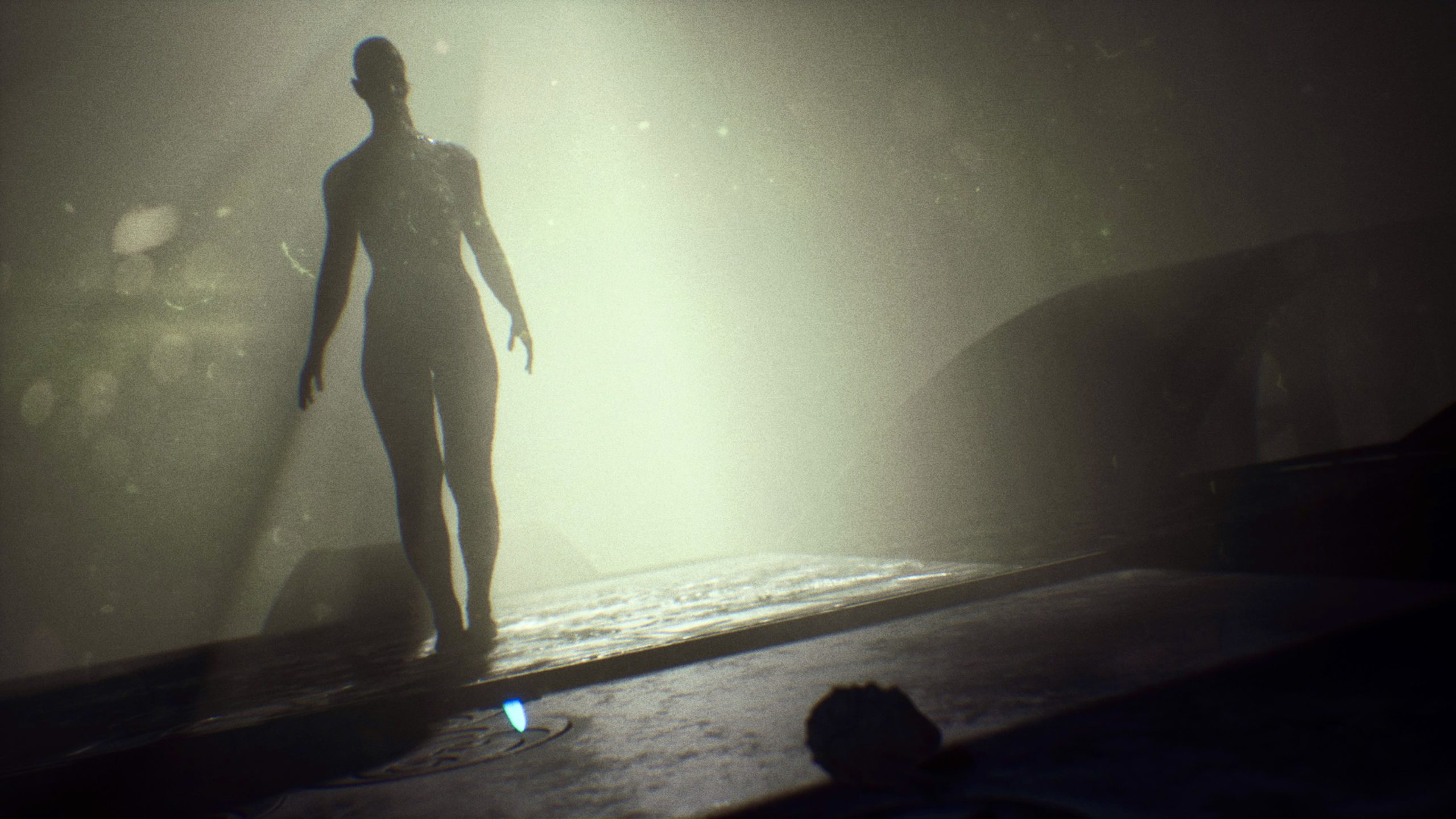
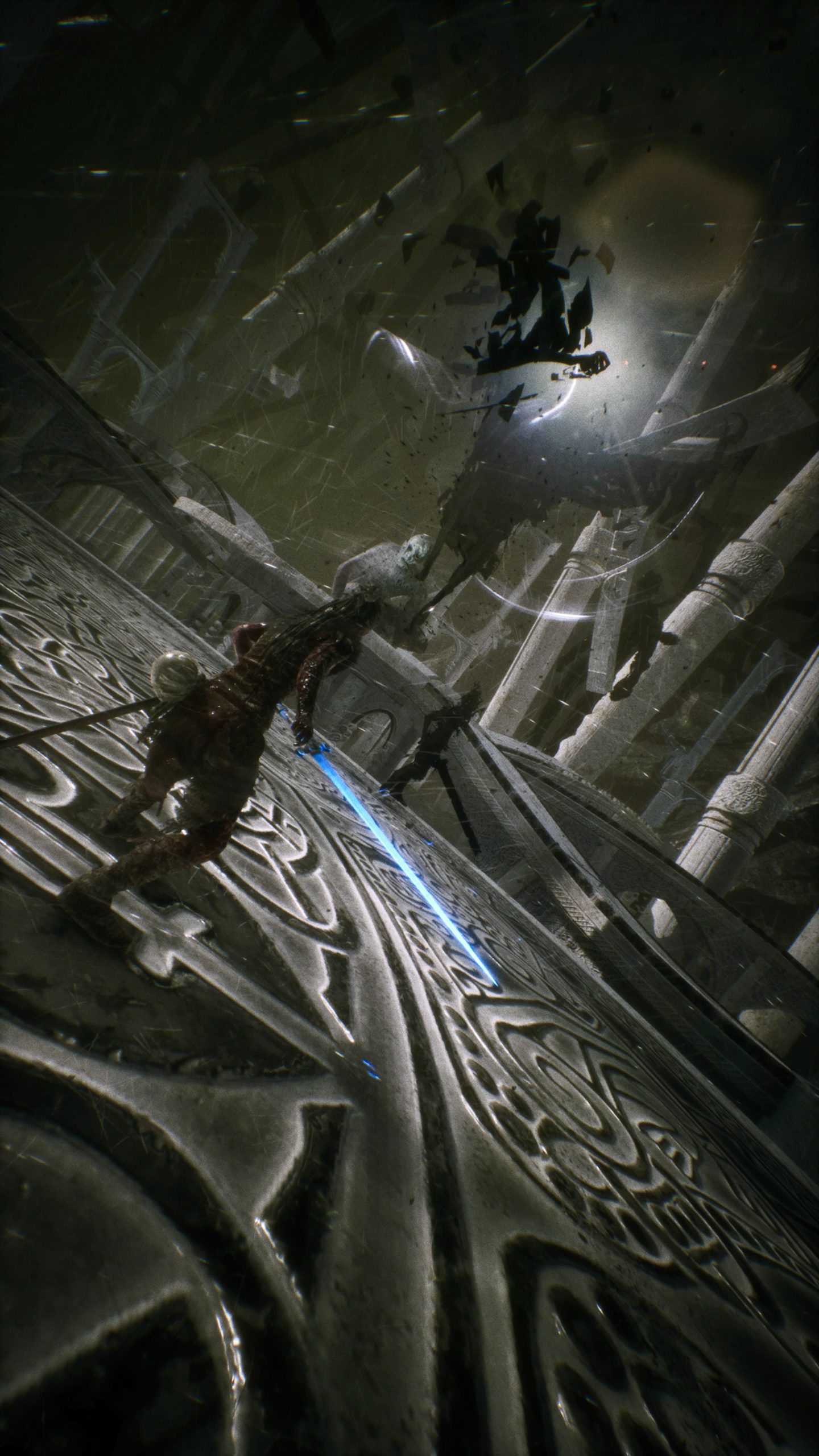
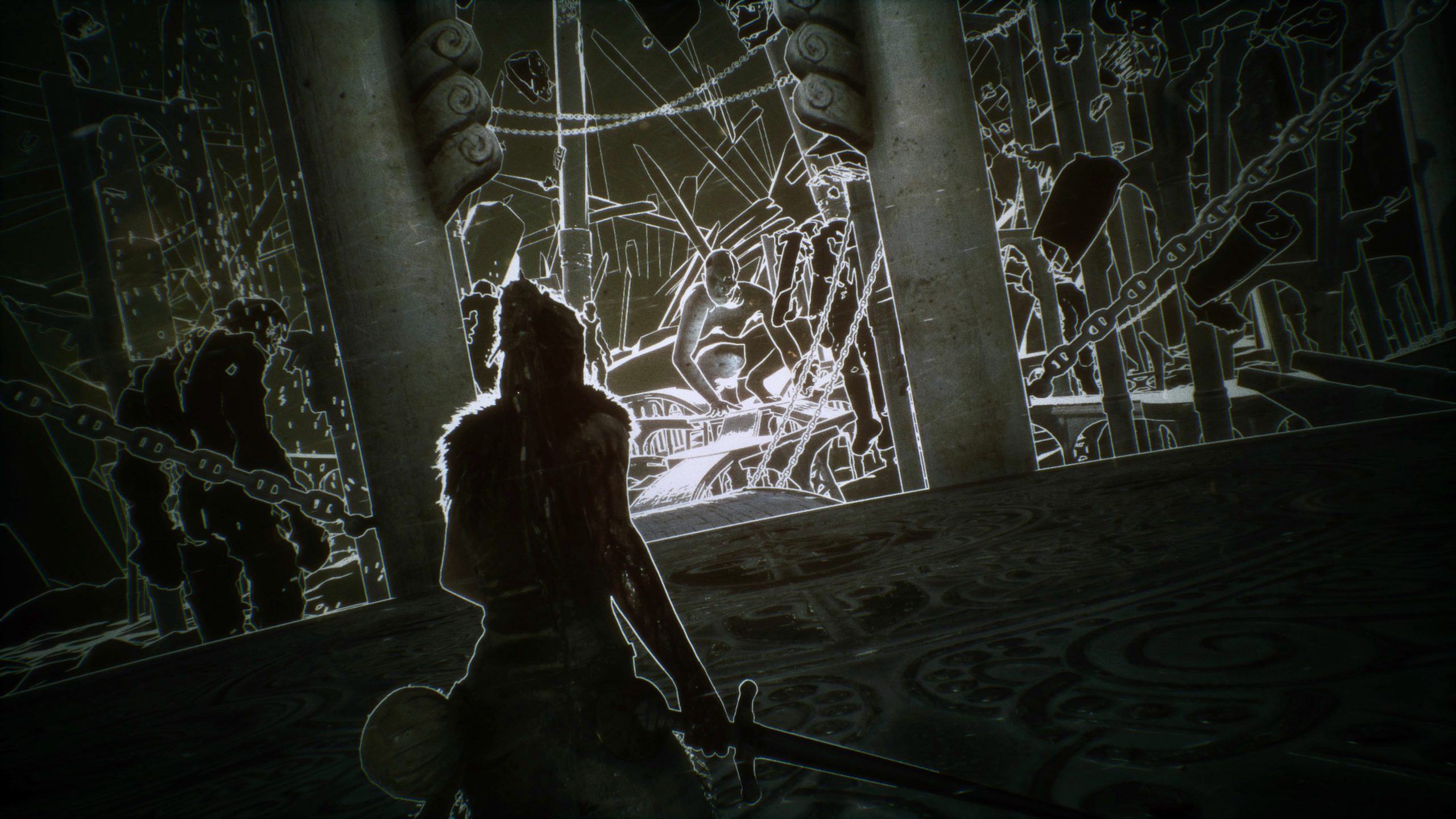 Hela, the goddess of the underwold and a manifestation. of Senua’s darkest fears.
Hela, the goddess of the underwold and a manifestation. of Senua’s darkest fears.
Locations, Fears and Gameplay
Each level in Hellblade represents a specific fear Senua has to pass and overcome in her journey of the heroine. In Surtr’s Domain, for example, Senua has to face her fear of fire (her mother burned to death, similarly to Dillian’s village), overcome trials and hallucinations (the apparition of fire and imagined pain) and, eventually, face Surtr himself, the god of fire. In addition, there are labyrinths to maneuver through (felling lost), a section where Senua is blinded by darkness or runs away from vicious beasts.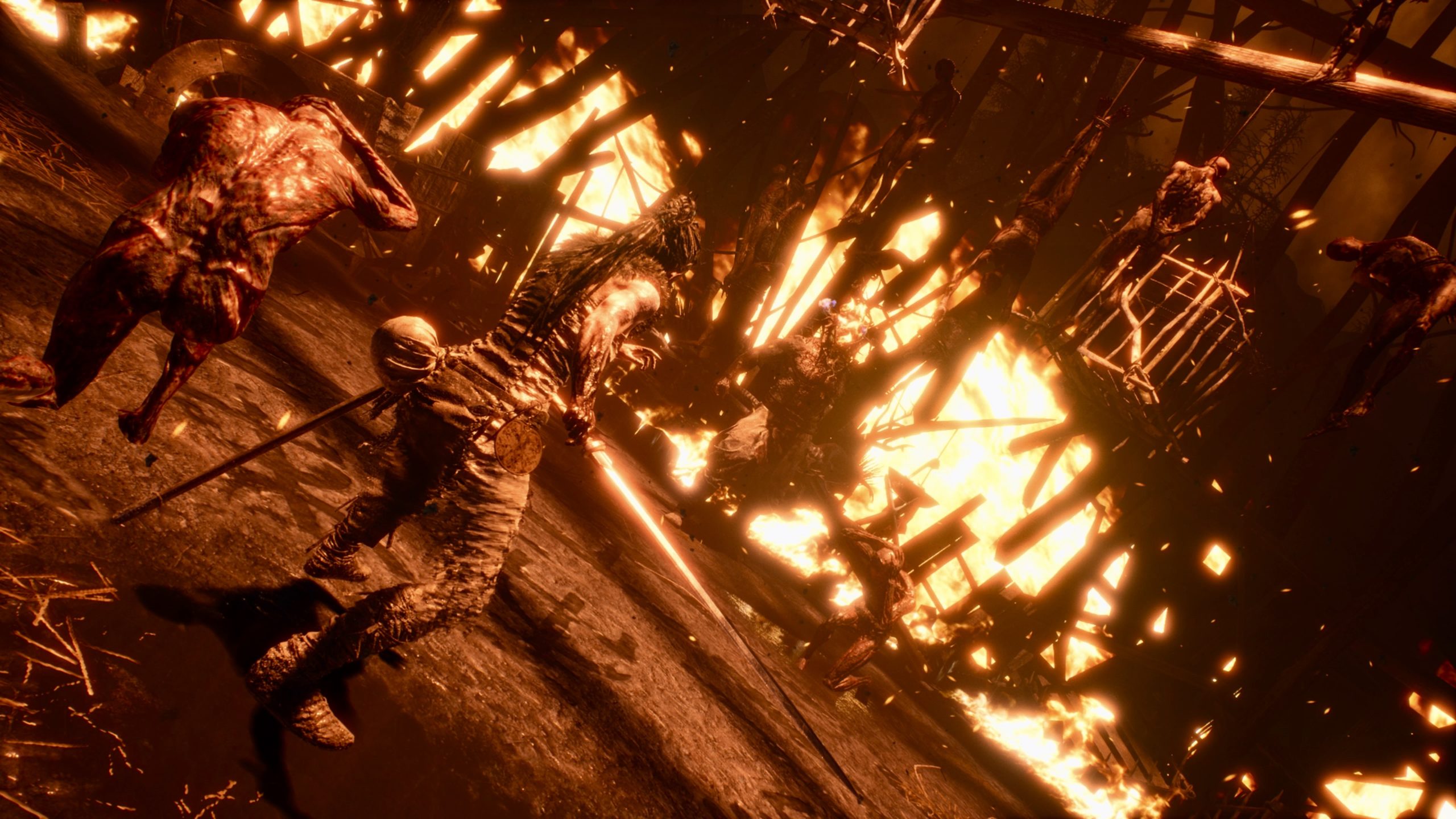
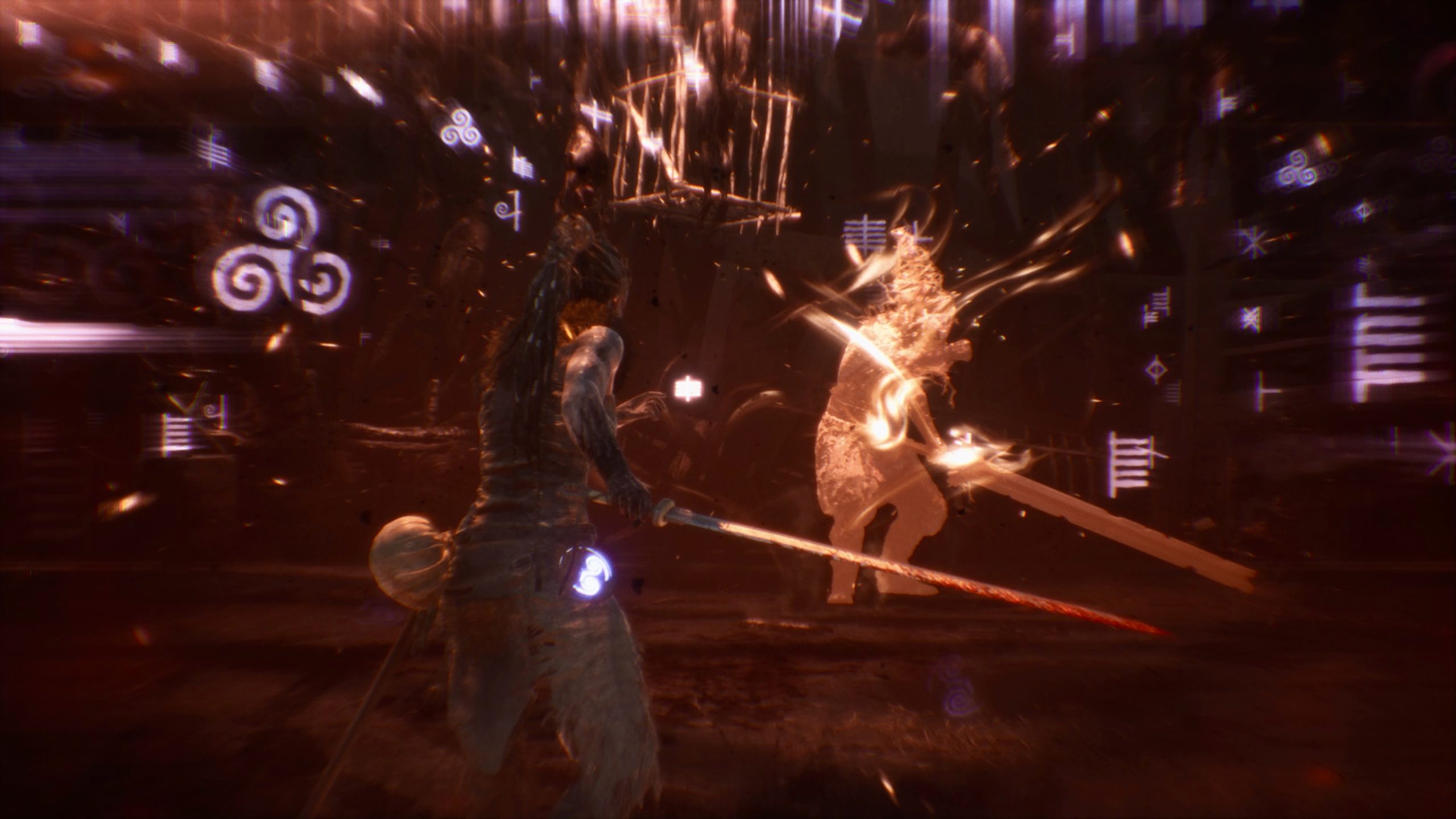
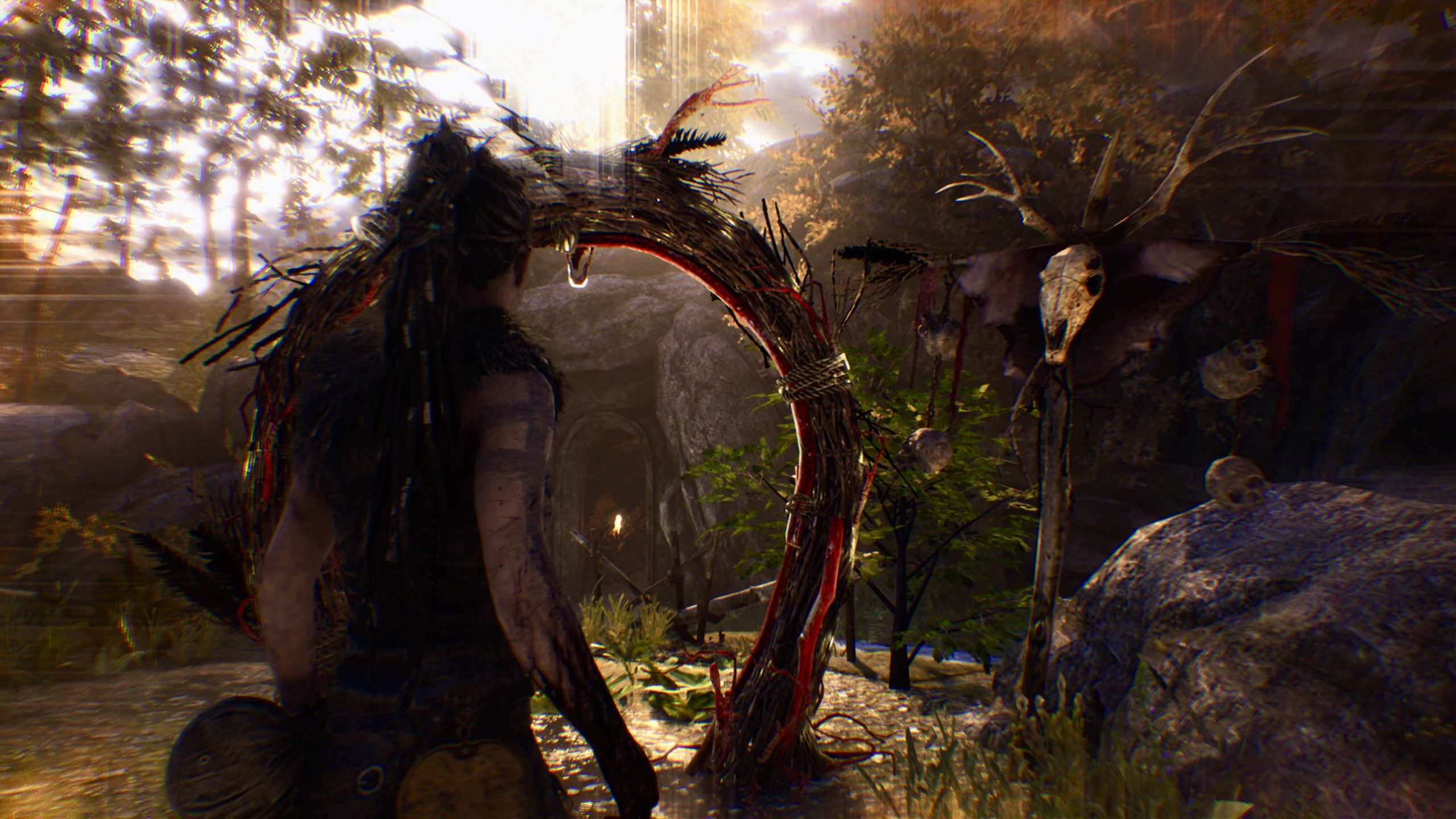 Trials and battles help players experience psychosis through gameplay.
Trials and battles help players experience psychosis through gameplay.


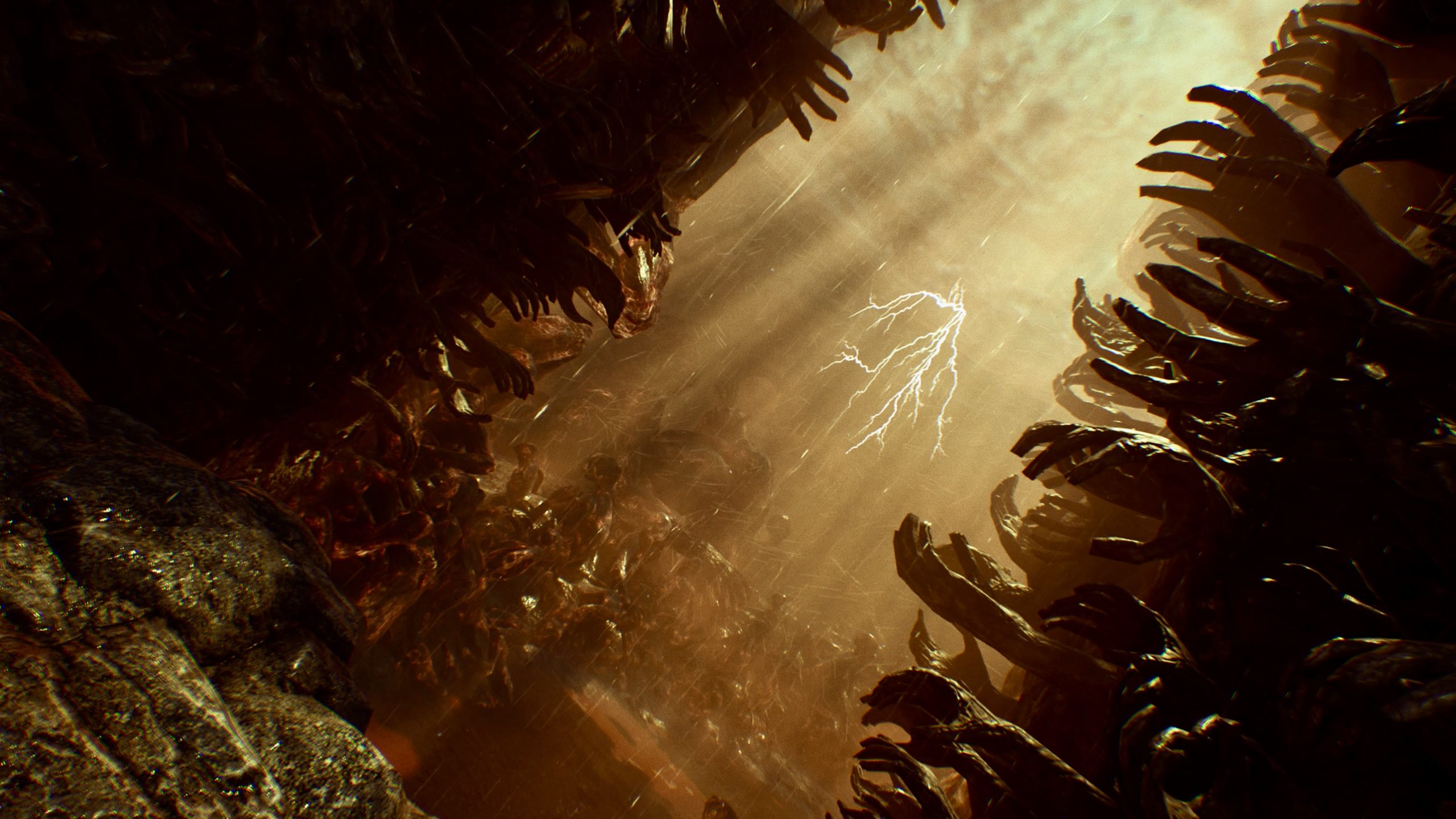
 The descent into Helheim represents a journey into Senua’s unsconsciouness to unveil her hidden wish.
The descent into Helheim represents a journey into Senua’s unsconsciouness to unveil her hidden wish.
Senua reaching (partial) mental sanity
With Senua facing Hela (and thus her inner fears), she is about to overcome her mental trauma, at least partially. It doesn’t seem that she is fully recovered, and how could she. But it is a first step to live on her live and accept the losses she has suffered in life: that of her mother and Dillion.
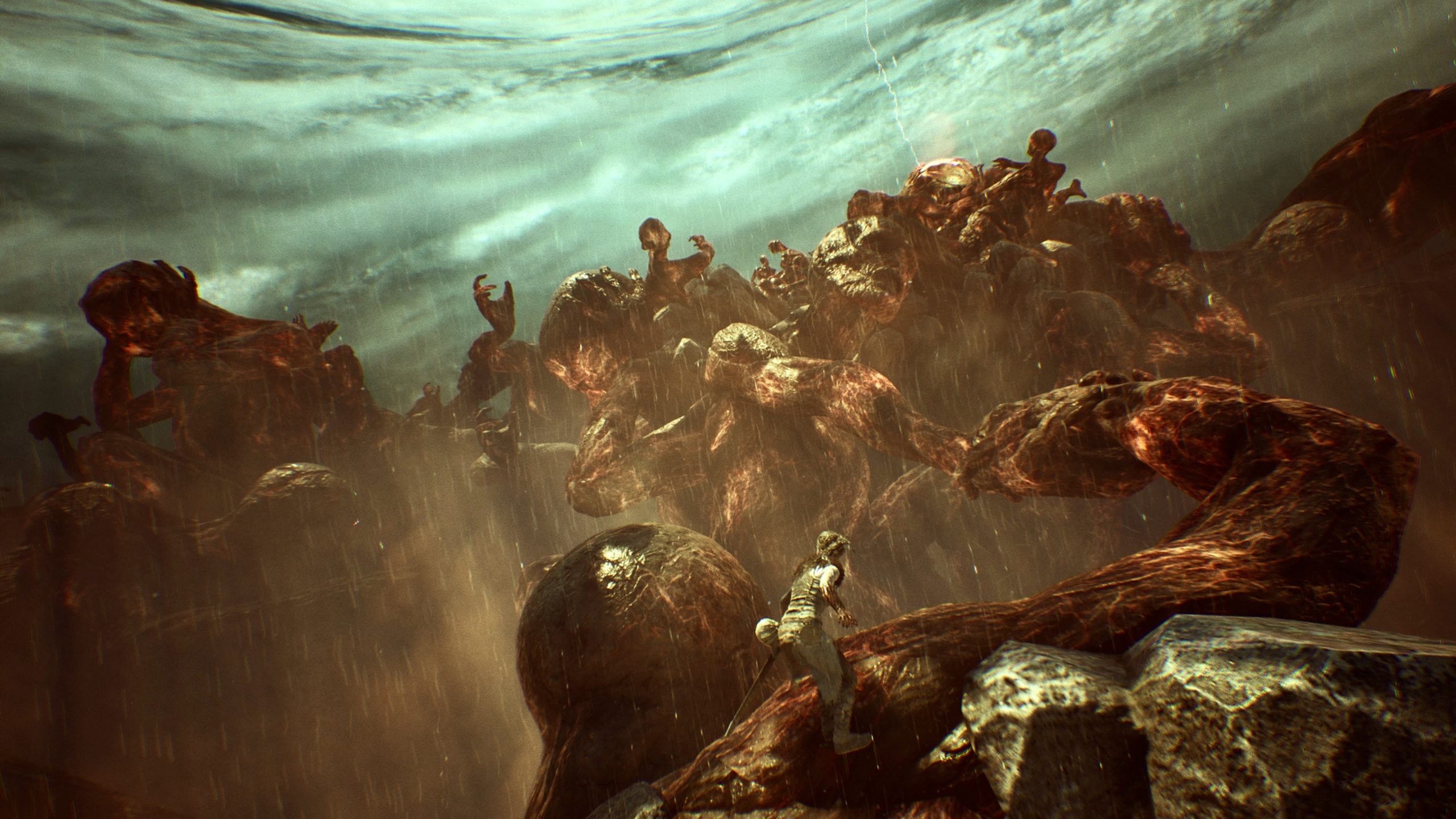


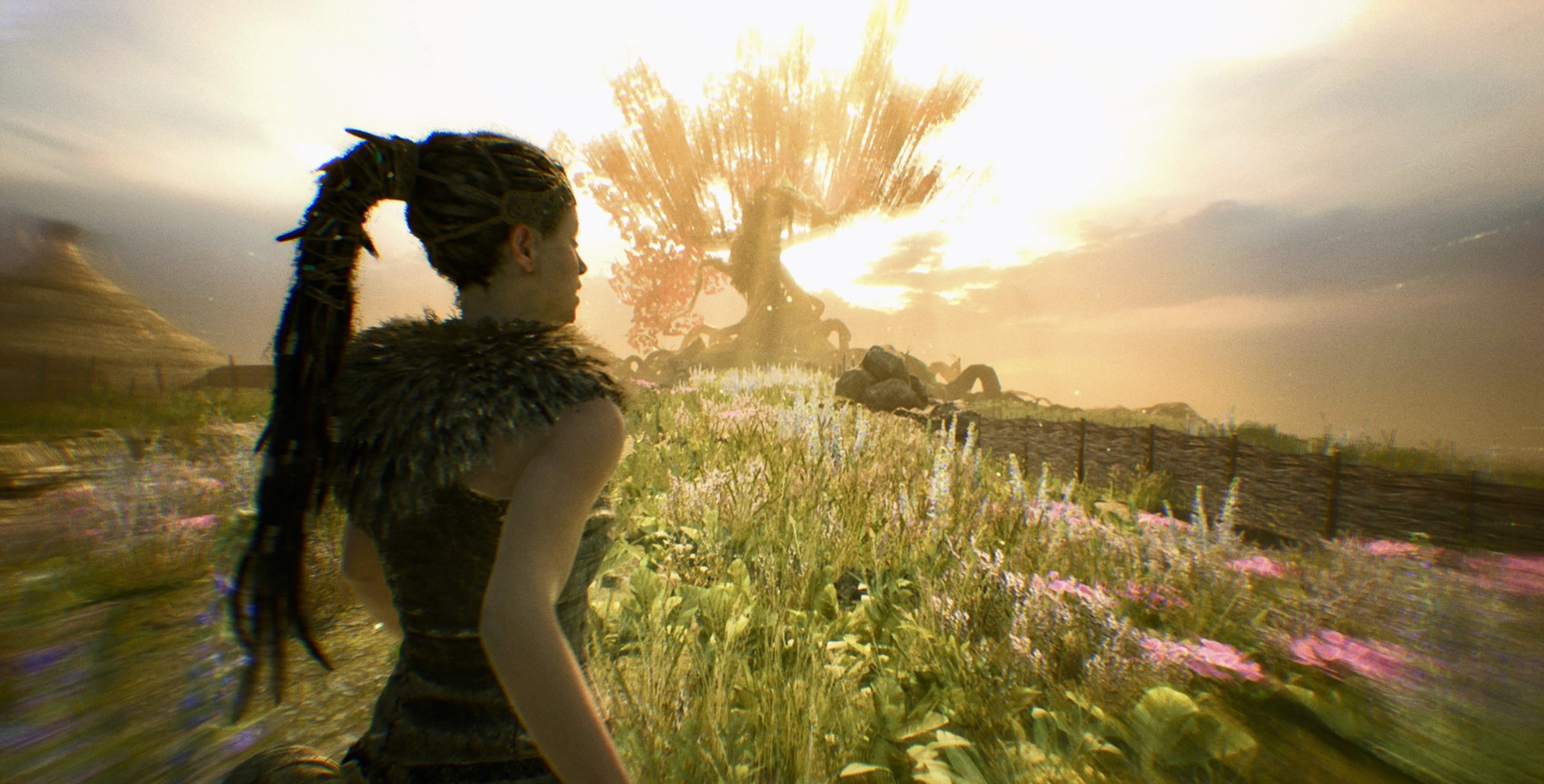 All pictures captured on the PlayStation 4 Pro
Ninja Theory. Hellblade: Senua’s Sacrifice. Ninja Theory, 2018.
All pictures captured on the PlayStation 4 Pro
Ninja Theory. Hellblade: Senua’s Sacrifice. Ninja Theory, 2018.
